Qualitative research in marketing: definition, methods and examples
Apr 7th, 2022


What is qualitative research?
Qualitative research methods, how to design qualitative research , qualitative research examples.
- Share this article
Qualitative research allows businesses to determine customers’ needs, generate ideas on improving the product or expanding the product line, clarify the marketing mix and understand how the product would fit into customers’ lifestyles. The research will be useful for businesses of any size and type. For example, entrepreneurs can use qualitative research to gain insight into customers’ feelings, values, and impressions of the product or service. With qualitative research, you can understand the reasons and motives of customers’ reactions and use this information to create marketing and sales strategies .
The research can also help you design products and services that meet the requirements of your target audience. For instance, imagine you are a restaurant owner and want to introduce a new menu; you can conduct qualitative research and invite local residents to give you feedback on the food, service, and pricing. This approach will increase your chances of success.
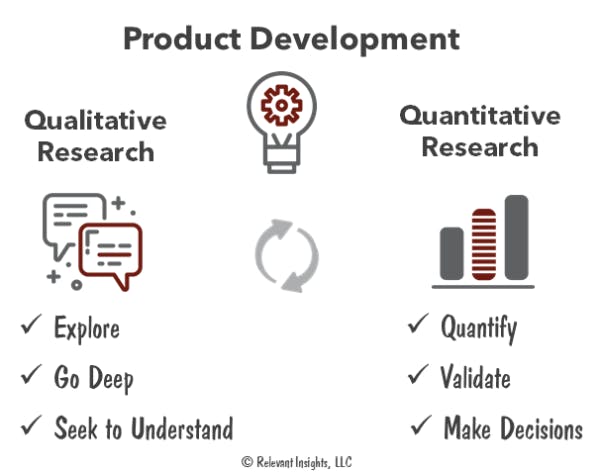
Qualitative research studies the motives that determine consumer behavior by employing observation methods and unstructured questioning techniques, such as individual in-depth interviews and group discussions. The approach involves the collection and analysis of primary and secondary non-numerical data. The goal of qualitative research is to understand the underlying reasons for making purchasing decisions and learn about customers’ values and beliefs.
Qualitative research asks open-ended questions beginning with the words “what”, “how”, and “why” to get feedback concerning a new product or service before the launch or development phase. This method reveals customers’ perceptions of the brand, buyers’ needs, advantages, and drawbacks of the product or service. Furthermore, it helps evaluate promotional materials and predict how the product or service can influence the lives of your customers.
This research method emerged in the early 1940s when American sociologist Paul Lazarsfeld introduced focus group interviews to study the impact of propaganda during World War II. In the late 1940s, American psychologist and marketing expert Ernest Dichter developed a new type of consumer research called motivational research. Dichter used Freudian psychoanalytic concepts to understand the motives of consumer behavior. He conducted in-depth interviews to learn more about customers’ needs and attitudes towards certain products.
In the 1960s, marketing academic John Howard began studying consumer behavior from the perspective of social sciences, including psychology, anthropology, and economics. At the same time, market researchers focused on the emotions, feelings, and attitudinal elements of consumption. As a result, in-depth interviews, video-recorded focus groups, and computer-assisted telephone interviews became prevalent qualitative research techniques.
With the advent of the Internet and mobile devices, qualitative research has undergone numerous changes. Today the Internet allows researchers to conduct surveys on a much larger scale. The marketers can use hyper-segmentation and hyper-personalization to launch targeted advertising campaigns, utilize market research analysis software and gather customer opinions using social media analysis. Let us take a detailed look at the basic methods of qualitative research.
The most common qualitative research methods include focus groups, individual interviews, observations, in-home videos, lifestyle immersion, ethnographic research, online sentence completion, and word association. We will consider each of them in more detail below.
Focus groups
Focus groups are discussions dedicated to a specific product and its marketing strategies . The groups typically consist of 6-10 people and a moderator who encourages them to express their opinions and feelings about the product. Usually, focus groups are held in-person to study consumers’ verbal and non-verbal reactions to the product or advertising campaign.

This method has several applications, including testing marketing programs, evaluating the overall concept for a product, examining the copy and images of the advertisements, and analyzing the new types of product packaging. Nowadays, in-person focus groups are losing popularity, while online discussions via video conferencing tools are attracting a lot of attention from researchers.
Social media analysis
Social media and mobile devices give brands more opportunities to gather and analyze information. Customers now interact directly with brands on social media platforms where they spend their free time. Content analysis of Facebook posts, comments, tweets, YouTube videos , and Instagram photos allows brands to track consumers’ activities, locations, and commonly used words.
You can ask for users’ feedback , encourage them to fill out a brief survey, or engage with customers to inform them of your marketing plans and the development of new products. Furthermore, the qualitative research participants can provide additional contextual information like photos and videos, which gives a better understanding of their thoughts and attitudes.
Individual interviews
An individual interview is usually conducted in person, over the phone, or via video conferencing platforms. The interviewer asks the existing customer a number of questions to determine his motivation to buy a particular product. One-to-one interviews are held as a free-flowing conversation and include open-ended questions. The interviews can be flexible, semi-structured, and unstructured. You can ask about the customer’s frustrations concerning the product, motivations and reasons for purchase, and the sources of information from which they learned about the product.
Observations
Observations allow researchers to see how the customers react to the products in the store and analyze their shopping behavior and purchase experience. This method is more effective than written surveys as it provides better insight into consumer reactions. For example, the researchers can observe how customers stop outside the store, what attracts them to the shop window and which way they walk once they enter the store. In addition, observations help determine problems related to product placement on store shelves, clutter, or products that are out of stock. You can also collect customer feedback to improve some aspects of the shopping process, like packaging design.
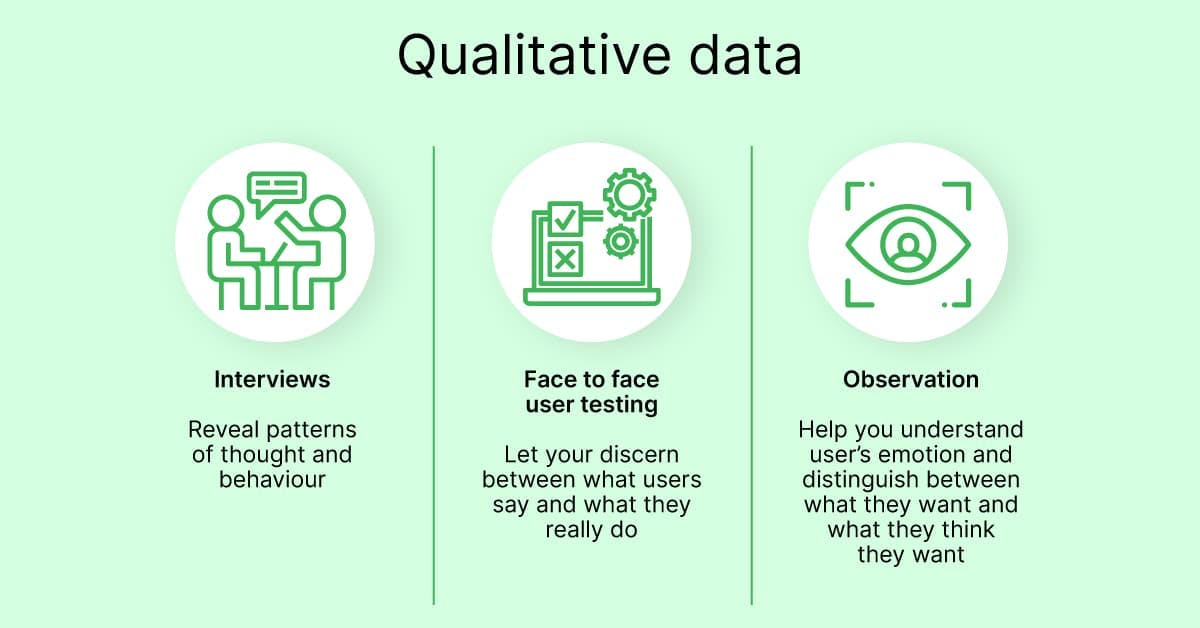
In-home videos
In-home videos allow researchers to watch how customers engage with the product in the comfort of their own homes. Using this method, you can monitor user behavior in a natural and relaxed environment. Thus, you can have a better picture of the ways people use your product. The customers can keep video diaries or film the videos with detailed comments concerning your product. You can store the qualitative content in one place and create an insight hub to analyze and reuse the collected information in the future.
Lifestyle immersion
Lifestyle immersion is another method that allows obtaining customer feedback in a comfortable environment. Immersion refers to the researcher’s profound personal involvement in a customer’s life. For instance, the researcher visits an event, such as a party or family gathering, and observes the user’s reactions and behaviors in a familiar setting. Watching how users speak to their family and friends is an increasingly effective technique that allows learning more about their needs, challenges, and motives.
Ethnographic research
Ethnography is a type of research that originates from 20th-century anthropology and involves observing people in a natural environment rather than a lab. Namely, the researchers watch how respondents cope with their daily tasks, such as grocery shopping or preparing dinner. This helps see what people actually do instead of what they claim to do.
Ethnography applies a variety of approaches, including direct observation, video recordings, diary studies, and photography. Researchers can observe the user’s behavior at home, at the workplace, or with their family or friends. Passive observation as a method of ethnographic research implies following and watching users without interacting with them or interfering with their actions. Active observation, in contrast, entails working or cooperating with consumers, asking them questions about a product or service, and joining their team or group.
Online sentence completion and word association
Sentence completion is a projective technique used in qualitative research to allow customers to express their opinions and feelings. According to this method, the respondents receive the survey with unfinished sentences. They should complete sentences that describe the product or find the words that would be appropriate in the context of the sentence. With this method, the researcher can put qualitative data in a structured form.
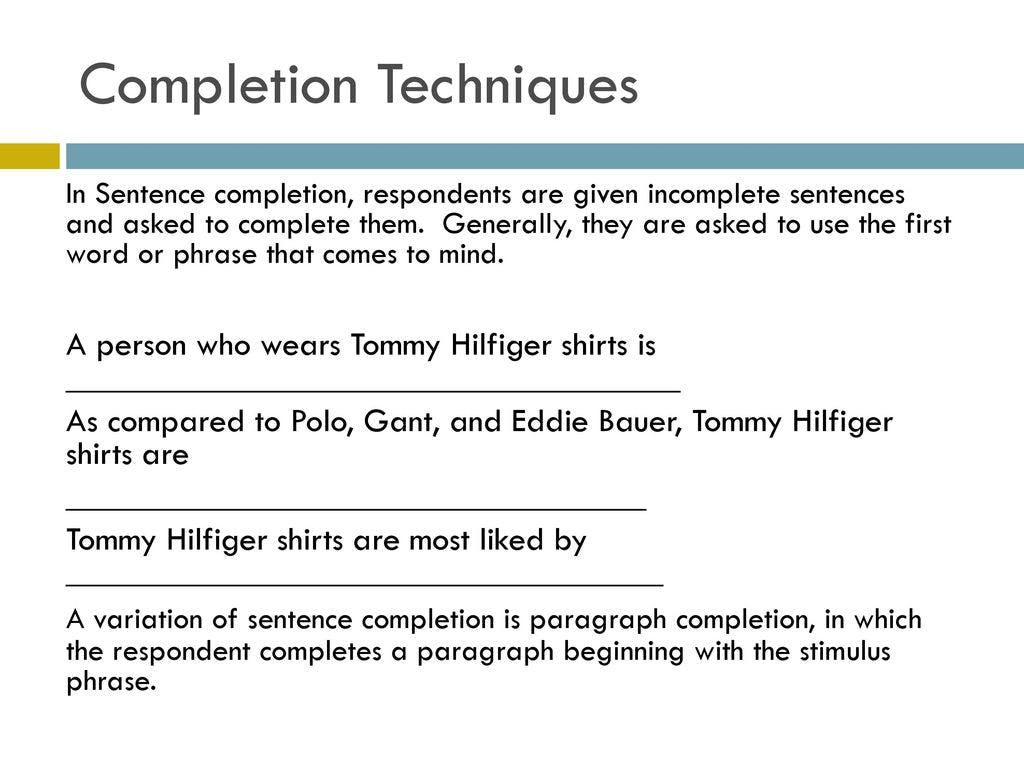
Word association is a similar technique that helps researchers gather information about brand awareness , images, and associations related to a specific product or brand. The respondents are given the trigger words and instructed to write the first word, association, or image that comes to mind. In contrast to the interviews and focus groups, sentence completion and word association techniques can reach more people when conducted online. Moreover, it takes less time to analyze the results and understand users’ perceptions.
Once you have learned about the most widely used qualitative research methods, it is time to plan the research process step by step.
The success of your research outcomes greatly depends on adequate planning and appropriate strategy. Here we will list some general guidelines on how to conduct qualitative research.
Determine research objectives
The first step to designing or running qualitative market research is understanding the goals you want to achieve with your study. In particular, the research objectives might include discovering the existing or potential product or brand positioning , understanding perceptions about the company or product, investigating how people react to advertising campaigns, packaging or design, evaluating website usability, and identifying strengths and weaknesses in the product. The absence of clear objectives would create challenges for the researcher as qualitative research involves open-ended questions and in-depth replies that are difficult to interpret and analyze directly.
Choose the methodology to conduct the research
Determine the most suitable method to perform market research taking into account demographics, geographical location of your target audience, lifestyle behaviors, and the product that is being examined. Market researchers usually collaborate with professional recruiters who find and screen the participants. A significant part of the researcher’s work is to develop a list of topics for discussion in small groups. You need to involve moderators who would spend from 90 to 120 minutes with the group asking questions, observing their reactions, and analyzing behavior.
Investigate various data collection methods
Once you have chosen the observation method, you need to involve a moderator to examine the participants’ behavior and take notes. This approach usually requires a video camera or a one-way mirror. You can also combine qualitative and quantitative research to collect numerical data and analyze metrics together with customers’ replies and observation results.
When running focus groups, you can either organize one discussion with eight to ten participants or a series of online meetings which will last three-four days. Respondents will answer the questions from the moderator or react to prerecorded videos.
When you conduct one-on-one interviews, you need to speak with the respondents on the phone or organize a personal meeting. This method will be suitable if you want customers to try the product and share their impressions.
Analyze the collected data
Researchers will typically need a few days to a few weeks to collect the information. Then researchers will examine the data to provide responses to your questions. The next step is qualitative coding or the technique of categorizing the findings to identify themes and patterns. The specialists might also include the statistics to explain what the data is indicating. Besides, the report might contain a narrative analysis of underlying messages and phrasings.
Study the report and recommendations
The final step is to review the report provided by the researchers. It can be a written document or video recording. The paper, based on MECE principles , will help you group the patterns and similarities and sort them according to demographics and other customer characteristics. The document will contain specific recommendations, so you can draw conclusions and start making improvements to your product marketing strategy .
In the next section of this article, we will review how famous brands have put qualitative research methods into practice.
Qualitative market research helps brands strengthen their reputation and credibility, segment customers , identify market trends, increase awareness, rebrand products , and get feedback from the consumers on their preferences. Let us discover how McDonald’s, Starbucks, and LEGO use data to confront tough competition.
When conducting market research, McDonald’s asks the customers several critical questions regarding best-performing products, the most appropriate pricing , the effective advertisements, and the most attended restaurants. Finding answers to these questions allows for analyzing whether the company managed to expand its customer base.
Furthermore, McDonald’s collects customer feedback to improve the products. In particular, many customers were disappointed with the lack of healthy and organic options on the menu. As a result, the company added apple slices and other healthy items to the menu and launched an advertising campaign to show that chicken nuggets and burgers were made of real meat.

Starbucks encourages customers to share feedback on the official site and contribute ideas via Twitter . The company monitors social media, tracks cultural trends, and offers customers to test the products in the stores. From 2008 to 2018, Starbucks used the My Starbucks Idea platform to collect ideas and continuously improve its products. The company implemented over 275 consumer ideas, including recommendations about new products and methods to improve corporate responsibility.
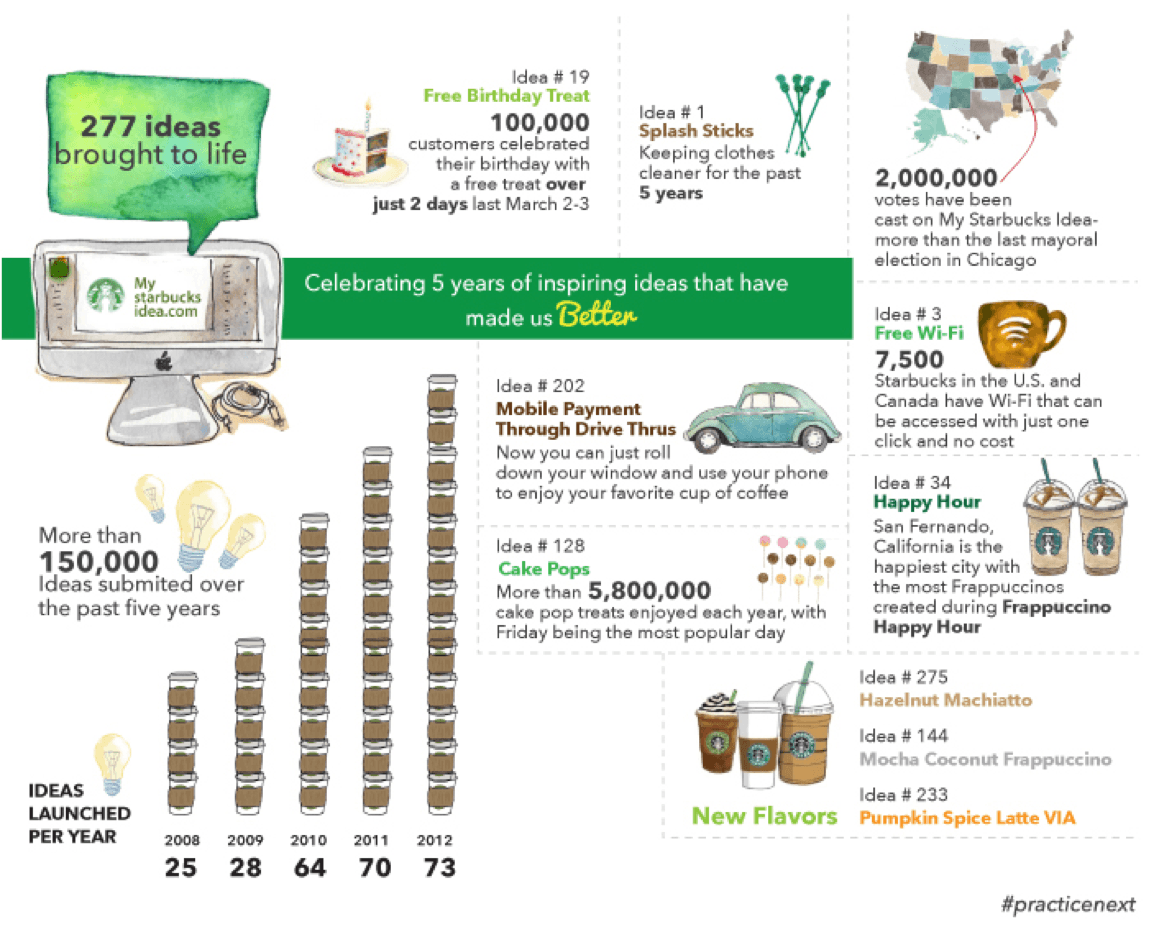
Some years before, LEGO was considered to be primarily a boy-oriented company. Then LEGO decided to promote inclusivity and create toys targeted at all genders. The company conducted research involving 3,500 girls and their parents to examine children’s behavior while playing with toys. Later LEGO used the collected data to determine the size of the figures and create bright packaging for the new toy line called “Friends” which was designed specifically for girls.
Companies would not create new offers, improve their existing products, satisfy the needs of their customers, or solve the most difficult challenges without market research. Qualitative research will help you obtain a clear understanding of your target customers, recognize the emotional connections to your brand, identify potential obstacles to purchase and features that are missing in your offer, and as a result, develop an outstanding product.

- Marketing Strategy & Branding
- Content Marketing & SEO
- Product Focused Marketing
- Digital Experience Design
- Marketing Automation
- Video Production
© 2023 Awware
Find the right market research agencies, suppliers, platforms, and facilities by exploring the services and solutions that best match your needs
list of top MR Specialties
Browse all specialties
Browse Companies and Platforms
by Specialty
by Location
Browse Focus Group Facilities

Manage your listing
Follow a step-by-step guide with online chat support to create or manage your listing.
About Greenbook Directory
IIEX Conferences
Discover the future of insights at the Insight Innovation Exchange (IIEX) event closest to you
IIEX Virtual Events
Explore important trends, best practices, and innovative use cases without leaving your desk
Insights Tech Showcase
See the latest research tech in action during curated interactive demos from top vendors
Stay updated on what’s new in insights and learn about solutions to the challenges you face
Greenbook Future list
An esteemed awards program that supports and encourages the voices of emerging leaders in the insight community.
Insight Innovation Competition
Submit your innovation that could impact the insights and market research industry for the better.
Find your next position in the world's largest database of market research and data analytics jobs.

For Suppliers
Directory: Renew your listing
Directory: Create a listing
Event sponsorship
Get Recommended Program
Digital Ads
Content marketing
Ads in Reports
Podcasts sponsorship
Run your Webinar
Host a Tech Showcase
Future List Partnership
All services

Dana Stanley
Greenbook’s Chief Revenue Officer
Qualitative Research
June 28, 2024
8 Examples of Qualitative Research
Unveil the depth of human behavior with qualitative research. Dive into narratives and interpretations to find hidden meanings in market research and UX design.
by Ashley Shedlock
Content Coordinator at Greenbook
Qualitative research offers deep insights into human behavior by delving into individual perspectives, societal dynamics, and cultural influences. It emphasizes narratives and subjective interpretations to unveil hidden meanings. Real-world examples in fields like market research and UX design demonstrate how qualitative research uncovers consumer behaviors and user experiences, driving innovative solutions and informed decision-making through the richness of human interactions.
What is Qualitative Research?
Qualitative research is a methodology used to gain an in-depth understanding of human behavior and the reasons that govern such behavior. It focuses on exploring and interpreting phenomena in their natural settings, aiming to uncover the meaning individuals attribute to their experiences. Qualitative research encompasses a variety of methods such as interviews, observations, case studies, and focus groups, allowing researchers to delve deep into the complexities of human interactions and perceptions.
By emphasizing subjective experiences and perspectives, qualitative research adds richness and depth to our understanding of social phenomena. It is a valuable tool for uncovering nuances, exploring diverse viewpoints, and capturing the essence of complex human behavior that quantitative methods often overlook.
Qualitative Research Methods vs Quantitative Research Methods
When contrasting qualitative and quantitative research methods, it is crucial to recognize the unique approaches they employ in examining phenomena. Qualitative research methods involve delving into the depth and intricacies of human experiences, beliefs, and behaviors.
In contrast to quantitative research's focus on numerical data and statistical analysis, qualitative research delves into the intricacies of human narratives and perspectives. Qualitative research methods encompass various approaches such as interviews, focus groups, observations, and content analysis.
In qualitative research, researchers immerse themselves in the study's context to gain a comprehensive understanding of the subject matter. This approach allows for flexibility and adaptability, enabling researchers to uncover unexpected insights and meanings. For example, conducting in-depth interviews can unveil personal narratives and emotions that quantitative data may not capture alone.
Ethnographic research is another qualitative method where researchers observe and engage in the daily lives of the subjects. This approach provides insights into cultural practices, social interactions, and the contextual factors influencing behaviors. By immersing themselves in the research environment, researchers unveil valuable insights contributing to a broader understanding of the subject.
Thematic analysis, a qualitative research method, involves identifying patterns and themes within qualitative data. Researchers scrutinize textual or visual data to unveil recurring topics or ideas, facilitating the development of meaningful interpretations. This method aids in organizing and deriving sense from the vast qualitative data amassed during a study.
In contrast to quantitative research methods that quantify relationships and outcomes, qualitative methods emphasize exploring meanings, interpretations, and subjective experiences. By integrating various qualitative research methods, researchers can attain a holistic understanding of complex phenomena that transcends mere numerical representations.
While qualitative research methods may not yield universally applicable results like quantitative methods, they offer a profound exploration of the human experience. Embracing the complexities of qualitative research enables researchers to unearth valuable insights and deepen our understanding of the world.
Types of Qualitative Research
1. Interviews: One common type of qualitative research is conducting interviews. Researchers engage with participants in open-ended conversations to gather in-depth insights into their experiences, opinions, and perspectives. These interviews can be structured, semi-structured, or unstructured, allowing for a flexible approach to data collection.
2. Observations: Another key example of qualitative research is observations. Researchers directly observe subjects in their natural environment to understand behavior, interactions, and social dynamics. This method allows for the study of non-verbal cues, environmental influences, and group dynamics that may not be captured through other means.
3. Focus Groups: Qualitative research often utilizes focus groups to gather data from multiple participants simultaneously. In these group discussions, participants are encouraged to express their thoughts, feelings, and attitudes on a specific topic. The dynamic interaction among group members can yield rich insights and uncover collective beliefs or norms.
4. Case Studies: Case studies involve an in-depth analysis of a particular individual, group, or event. Researchers delve deeply into the case to explore nuances, contexts, and unique circumstances. By examining specific instances in detail, researchers can uncover rich, detailed insights that contribute to a broader understanding of the topic under study.
5. Content Analysis: Researchers may also employ content analysis as a qualitative research method. This involves systematically analyzing text, audio, video, or visual content to identify patterns, themes, and meanings. Through content analysis, a qualitative researcher can uncover underlying messages, cultural representations, and discourses present in the materials being studied.
6. Narrative Research: Narrative research focuses on the stories and personal accounts of individuals to understand their lived experiences. By analyzing narratives shared by participants, researchers can uncover themes, emotions, and perspectives that reveal deeper insights into human behavior and social phenomena.
7. Ethnographic Research: Ethnographic research involves immersing researchers in the culture or community being studied. Researchers spend extended periods observing and interacting with participants to gain a holistic understanding of their behaviors, practices, and beliefs. This immersive approach allows for a nuanced exploration of social contexts and cultural nuances.
8. Action Research: In action research, researchers actively engage with participants to bring about positive change or address real-world problems. This collaborative approach combines research and practical action, allowing for the co-creation of knowledge and the implementation of solutions based on research findings.
Each type of qualitative research offers a unique perspective and methodology for understanding complex human experiences and social phenomena. By employing a combination of these methods, researchers can gain comprehensive insight that enriches our understanding of the world around us.
Data Collection Techniques in Qualitative Research
Qualitative research utilizes interviews to gain detailed participant insight. Observations capture behaviors in natural settings, revealing hidden dynamics and influences. Focus groups facilitate group discussions to reveal shared beliefs and differences. Document analysis extracts insights from various materials, offering historical and cultural context.
Each method contributes uniquely to data collection: interviews provide personal accounts, observations offer direct insights, focus groups foster discussions, and document analysis adds historical perspective. Researchers should maintain clear communication, ethical standards, and rigorous data analysis. Examples include interviews uncovering patient experiences, observations revealing classroom dynamics, focus groups identifying consumer preferences, and document analysis unveiling social trends.
When to Use Qualitative Research Methods
Qualitative research methods are best utilized when you aim to delve deep into understanding complex phenomena that cannot be quantified easily. These methods are particularly valuable when exploring people's emotions, behaviors, motivations, and experiences, providing rich, nuanced insights that quantitative data alone cannot capture. By employing qualitative research, you can uncover underlying reasons behind certain trends or patterns, shedding light on the 'why' rather than just the 'what' of a particular situation or behavior.
One of the key advantages of qualitative research methods is their flexibility and adaptability to different research settings. Whether conducting in-depth interviews, focus groups, or observational studies, these methods allow researchers to immerse themselves in the context under study, gaining a holistic understanding of the subject matter. This hands-on approach enables the researcher to gather detailed, in-depth information that can offer unique perspectives and unveil unexpected insights.
Qualitative research methods excel in exploring sensitive topics or marginalized voices, giving a platform for individuals to share their experiences and perspectives in a supportive and non-threatening environment. This can be particularly valuable in areas such as social sciences, psychology, anthropology, and market research, where understanding human behavior and social dynamics is paramount.
Qualitative research provides a qualitative researcher with a powerful toolkit to explore the intricacies of human experiences, behaviors, and interactions. By embracing the richness of qualitative data, researchers can generate meaningful narratives, valuable insights, and actionable recommendations that contribute significantly to advancing knowledge and understanding in various fields of study.
Ashley Shedlock
12 articles
The views, opinions, data, and methodologies expressed above are those of the contributor(s) and do not necessarily reflect or represent the official policies, positions, or beliefs of Greenbook.
Comments are moderated to ensure respect towards the author and to prevent spam or self-promotion. Your comment may be edited, rejected, or approved based on these criteria. By commenting, you accept these terms and take responsibility for your contributions.
Evrim Tanis
July 4, 2024
This is a very detailed and beautiful article about qualitative research. Congratulations; you also combined research and technology.
More from Ashley Shedlock
Research Methodologies
Qualitative vs. Quantitative Market Research: Why Not Both?
Discover the benefits of qualitative and quantitative methods. Learn how to leverage both approaches for insights into consumer behavior and industry ...
August 14, 2024
Read article
Brand Strategy
Brand Tracking Tech 101
Gain valuable insights into consumer preferences and behaviors with brand tracking. Stay ahead of the competition by monitoring key brand metrics cons...
July 31, 2024
How to Use Automation in Research
Discover the power of automation in research. Streamline processes and enhance efficiency. Transform data collection and analysis for speed and scalab...
July 26, 2024
Customer Experience (CX)
How to Use Mystery Shopping Research to Improve the Customer Experience
Discover the power of mystery shopping research in improving customer experience. Uncover service strengths and exceed customer expectations to boost ...
July 25, 2024
Top in Quantitative Research
Moving Away from a Narcissistic Market Research Model
Why are we still measuring brand loyalty? It isn’t something that naturally comes up with consumers, who rarely think about brand first, if at all. Ma...
Devora Rogers
Chief Strategy Officer at Alter Agents
May 31, 2023
Sign Up for Updates
Get content that matters, written by top insights industry experts, delivered right to your inbox.
67k+ subscribers
Weekly Newsletter
Greenbook Podcast
Event Updates
I agree to receive emails with insights-related content from Greenbook. I understand that I can manage my email preferences or unsubscribe at any time and that Greenbook protects my privacy under the General Data Protection Regulation.*
Get the latest updates from top market research, insights, and analytics experts delivered weekly to your inbox
Your guide for all things market research and consumer insights
Create a New Listing
Manage My Listing
Find Companies
Find Focus Group Facilities
Tech Showcases
GRIT Report
Expert Channels
Get in touch
Marketing Services
Future List
Publish With Us
Privacy policy
Cookie policy
Terms of use
Copyright © 2024 New York AMA Communication Services, Inc. All rights reserved. 234 5th Avenue, 2nd Floor, New York, NY 10001 | Phone: (212) 849-2752

83 Qualitative Research Questions & Examples

Free Website Traffic Checker
Discover your competitors' strengths and leverage them to achieve your own success
Qualitative research questions help you understand consumer sentiment. They’re strategically designed to show organizations how and why people feel the way they do about a brand, product, or service. It looks beyond the numbers and is one of the most telling types of market research a company can do.
The UK Data Service describes this perfectly, saying, “The value of qualitative research is that it gives a voice to the lived experience .”
Read on to see seven use cases and 83 qualitative research questions, with the added bonus of examples that show how to get similar insights faster with Similarweb Research Intelligence.

What is a qualitative research question?
A qualitative research question explores a topic in-depth, aiming to better understand the subject through interviews, observations, and other non-numerical data. Qualitative research questions are open-ended, helping to uncover a target audience’s opinions, beliefs, and motivations.
How to choose qualitative research questions?
Choosing the right qualitative research questions can be incremental to the success of your research and the findings you uncover. Here’s my six-step process for choosing the best qualitative research questions.
- Start by understanding the purpose of your research. What do you want to learn? What outcome are you hoping to achieve?
- Consider who you are researching. What are their experiences, attitudes, and beliefs? How can you best capture these in your research questions ?
- Keep your questions open-ended . Qualitative research questions should not be too narrow or too broad. Aim to ask specific questions to provide meaningful answers but broad enough to allow for exploration.
- Balance your research questions. You don’t want all of your questions to be the same type. Aim to mix up your questions to get a variety of answers.
- Ensure your research questions are ethical and free from bias. Always have a second (and third) person check for unconscious bias.
- Consider the language you use. Your questions should be written in a way that is clear and easy to understand. Avoid using jargon , acronyms, or overly technical language.
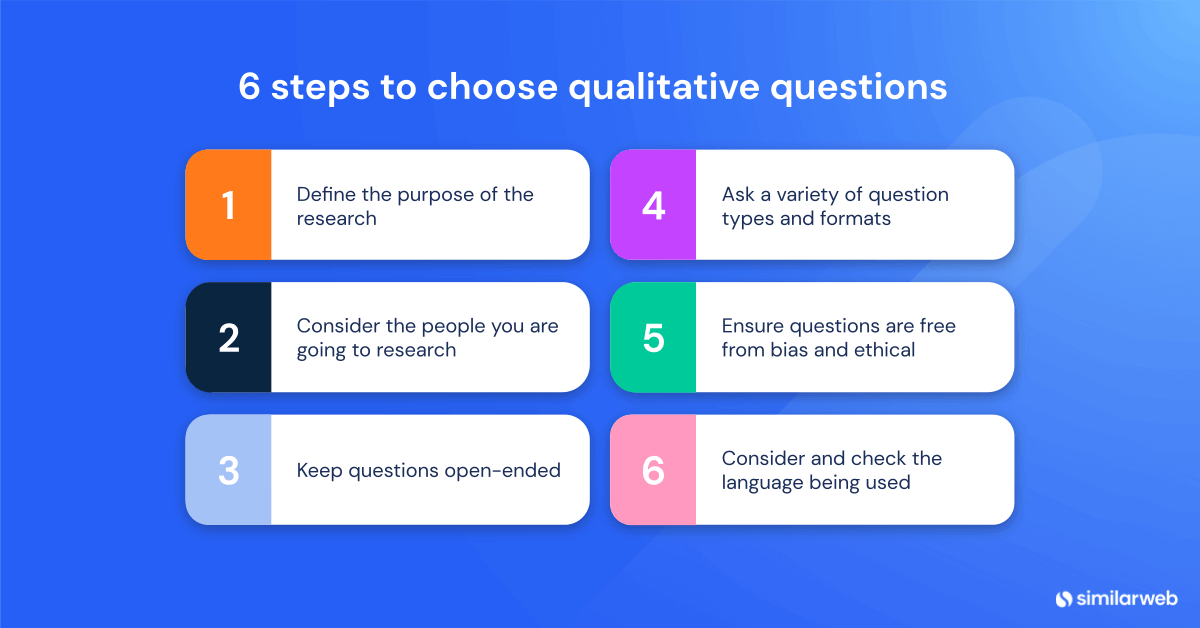
Types of qualitative research questions
For a question to be considered qualitative, it usually needs to be open-ended. However, as I’ll explain, there can sometimes be a slight cross-over between quantitative and qualitative research questions.
Open-ended questions
These allow for a wide range of responses and can be formatted with multiple-choice answers or a free-text box to collect additional details. The next two types of qualitative questions are considered open questions, but each has its own style and purpose.
- Probing questions are used to delve deeper into a respondent’s thoughts, such as “Can you tell me more about why you feel that way?”
- Comparative questions ask people to compare two or more items, such as “Which product do you prefer and why?” These qualitative questions are highly useful for understanding brand awareness , competitive analysis , and more.
Closed-ended questions
These ask respondents to choose from a predetermined set of responses, such as “On a scale of 1-5, how satisfied are you with the new product?” While they’re traditionally quantitative, adding a free text box that asks for extra comments into why a specific rating was chosen will provide qualitative insights alongside their respective quantitative research question responses.
- Ranking questions get people to rank items in order of preference, such as “Please rank these products in terms of quality.” They’re advantageous in many scenarios, like product development, competitive analysis, and brand awareness.
- Likert scale questions ask people to rate items on a scale, such as “On a scale of 1-5, how satisfied are you with the new product?” Ideal for placement on websites and emails to gather quick, snappy feedback.
Qualitative research question examples
There are many applications of qualitative research and lots of ways you can put your findings to work for the success of your business. Here’s a summary of the most common use cases for qualitative questions and examples to ask.
Qualitative questions for identifying customer needs and motivations
These types of questions help you find out why customers choose products or services and what they are looking for when making a purchase.
- What factors do you consider when deciding to buy a product?
- What would make you choose one product or service over another?
- What are the most important elements of a product that you would buy?
- What features do you look for when purchasing a product?
- What qualities do you look for in a company’s products?
- Do you prefer localized or global brands when making a purchase?
- How do you determine the value of a product?
- What do you think is the most important factor when choosing a product?
- How do you decide if a product or service is worth the money?
- Do you have any specific expectations when purchasing a product?
- Do you prefer to purchase products or services online or in person?
- What kind of customer service do you expect when buying a product?
- How do you decide when it is time to switch to a different product?
- Where do you research products before you decide to buy?
- What do you think is the most important customer value when making a purchase?
Qualitative research questions to enhance customer experience
Use these questions to reveal insights into how customers interact with a company’s products or services and how those experiences can be improved.
- What aspects of our product or service do customers find most valuable?
- How do customers perceive our customer service?
- What factors are most important to customers when purchasing?
- What do customers think of our brand?
- What do customers think of our current marketing efforts?
- How do customers feel about the features and benefits of our product?
- How do customers feel about the price of our product or service?
- How could we improve the customer experience?
- What do customers think of our website or app?
- What do customers think of our customer support?
- What could we do to make our product or service easier to use?
- What do customers think of our competitors?
- What is your preferred way to access our site?
- How do customers feel about our delivery/shipping times?
- What do customers think of our loyalty programs?
Qualitative research question example for customer experience
- ♀️ Question: What is your preferred way to access our site?
- Insight sought: How mobile-dominant are consumers? Should you invest more in mobile optimization or mobile marketing?
- Challenges with traditional qualitative research methods: While using this type of question is ideal if you have a large database to survey when placed on a site or sent to a limited customer list, it only gives you a point-in-time perspective from a limited group of people.
- A new approach: You can get better, broader insights quicker with Similarweb Digital Research Intelligence. To fully inform your research, you need to know preferences at the industry or market level.
- ⏰ Time to insight: 30 seconds
- ✅ How it’s done: Similarweb offers multiple ways to answer this question without going through a lengthy qualitative research process.
First, I’m going to do a website market analysis of the banking credit and lending market in the finance sector to get a clearer picture of industry benchmarks.
Here, I can view device preferences across any industry or market instantly. It shows me the device distribution for any country across any period. This clearly answers the question of how mobile dominate my target audience is , with 59.79% opting to access site via a desktop vs. 40.21% via mobile
I then use the trends section to show me the exact split between mobile and web traffic for each key player in my space. Let’s say I’m about to embark on a competitive campaign that targets customers of Chase and Bank of America ; I can see both their audiences are highly desktop dominant compared with others in their space .
Qualitative question examples for developing new products or services
Research questions like this can help you understand customer pain points and give you insights to develop products that meet those needs.
- What is the primary reason you would choose to purchase a product from our company?
- How do you currently use products or services that are similar to ours?
- Is there anything that could be improved with products currently on the market?
- What features would you like to see added to our products?
- How do you prefer to contact a customer service team?
- What do you think sets our company apart from our competitors?
- What other product or service offerings would like to see us offer?
- What type of information would help you make decisions about buying a product?
- What type of advertising methods are most effective in getting your attention?
- What is the biggest deterrent to purchasing products from us?
Qualitative research question example for service development
- ♀️ Question: What type of advertising methods are most effective in getting your attention?
- Insight sought: The marketing channels and/or content that performs best with a target audience .
- Challenges with traditional qualitative research methods: When using qualitative research surveys to answer questions like this, the sample size is limited, and bias could be at play.
- A better approach: The most authentic insights come from viewing real actions and results that take place in the digital world. No questions or answers are needed to uncover this intel, and the information you seek is readily available in less than a minute.
- ⏰ Time to insight: 5 minutes
- ✅ How it’s done: There are a few ways to approach this. You can either take an industry-wide perspective or hone in on specific competitors to unpack their individual successes. Here, I’ll quickly show a snapshot with a whole market perspective.

Using the market analysis element of Similarweb Digital Intelligence, I select my industry or market, which I’ve kept as banking and credit. A quick click into marketing channels shows me which channels drive the highest traffic in my market. Taking direct traffic out of the equation, for now, I can see that referrals and organic traffic are the two highest-performing channels in this market.
Similarweb allows me to view the specific referral partners and pages across these channels.

Looking closely at referrals in this market, I’ve chosen chase.com and its five closest rivals . I select referrals in the channel traffic element of marketing channels. I see that Capital One is a clear winner, gaining almost 25 million visits due to referral partnerships.

Next, I get to see exactly who is referring traffic to Capital One and the total traffic share for each referrer. I can see the growth as a percentage and how that has changed, along with an engagement score that rates the average engagement level of that audience segment. This is particularly useful when deciding on which new referral partnerships to pursue.
Once I’ve identified the channels and campaigns that yield the best results, I can then use Similarweb to dive into the various ad creatives and content that have the greatest impact.

These ads are just a few of those listed in the creatives section from my competitive website analysis of Capital One. You can filter this list by the specific campaign, publishers, and ad networks to view those that matter to you most. You can also discover video ad creatives in the same place too.
In just five minutes ⏰
- I’ve captured audience loyalty statistics across my market
- Spotted the most competitive players
- Identified the marketing channels my audience is most responsive to
- I know which content and campaigns are driving the highest traffic volume
- I’ve created a target list for new referral partners and have been able to prioritize this based on results and engagement figures from my rivals
- I can see the types of creatives that my target audience is responding to, giving me ideas for ways to generate effective copy for future campaigns
Qualitative questions to determine pricing strategies
Companies need to make sure pricing stays relevant and competitive. Use these questions to determine customer perceptions on pricing and develop pricing strategies to maximize profits and reduce churn.
- How do you feel about our pricing structure?
- How does our pricing compare to other similar products?
- What value do you feel you get from our pricing?
- How could we make our pricing more attractive?
- What would be an ideal price for our product?
- Which features of our product that you would like to see priced differently?
- What discounts or deals would you like to see us offer?
- How do you feel about the amount you have to pay for our product?
Get Faster Answers to Qualitative Research Questions with Similarweb Today
Qualitative research question example for determining pricing strategies
- ♀️ Question: What discounts or deals would you like to see us offer?
- Insight sought: The promotions or campaigns that resonate with your target audience.
- Challenges with traditional qualitative research methods: Consumers don’t always recall the types of ads or campaigns they respond to. Over time, their needs and habits change. Your sample size is limited to those you ask, leaving a huge pool of unknowns at play.
- A better approach: While qualitative insights are good to know, you get the most accurate picture of the highest-performing promotion and campaigns by looking at data collected directly from the web. These analytics are real-world, real-time, and based on the collective actions of many, instead of the limited survey group you approach. By getting a complete picture across an entire market, your decisions are better informed and more aligned with current market trends and behaviors.
- ✅ How it’s done: Similarweb’s Popular Pages feature shows the content, products, campaigns, and pages with the highest growth for any website. So, if you’re trying to unpack the successes of others in your space and find out what content resonates with a target audience, there’s a far quicker way to get answers to these questions with Similarweb.

Here, I’m using Capital One as an example site. I can see trending pages on their site showing the largest increase in page views. Other filters include campaign, best-performing, and new–each of which shows you page URLs, share of traffic, and growth as a percentage. This page is particularly useful for staying on top of trending topics , campaigns, and new content being pushed out in a market by key competitors.
Qualitative research questions for product development teams
It’s vital to stay in touch with changing consumer needs. These questions can also be used for new product or service development, but this time, it’s from the perspective of a product manager or development team.
- What are customers’ primary needs and wants for this product?
- What do customers think of our current product offerings?
- What is the most important feature or benefit of our product?
- How can we improve our product to meet customers’ needs better?
- What do customers like or dislike about our competitors’ products?
- What do customers look for when deciding between our product and a competitor’s?
- How have customer needs and wants for this product changed over time?
- What motivates customers to purchase this product?
- What is the most important thing customers want from this product?
- What features or benefits are most important when selecting a product?
- What do customers perceive to be our product’s pros and cons?
- What would make customers switch from a competitor’s product to ours?
- How do customers perceive our product in comparison to similar products?
- What do customers think of our pricing and value proposition?
- What do customers think of our product’s design, usability, and aesthetics?
Qualitative questions examples to understand customer segments
Market segmentation seeks to create groups of consumers with shared characteristics. Use these questions to learn more about different customer segments and how to target them with tailored messaging.
- What motivates customers to make a purchase?
- How do customers perceive our brand in comparison to our competitors?
- How do customers feel about our product quality?
- How do customers define quality in our products?
- What factors influence customers’ purchasing decisions ?
- What are the most important aspects of customer service?
- What do customers think of our customer service?
- What do customers think of our pricing?
- How do customers rate our product offerings?
- How do customers prefer to make purchases (online, in-store, etc.)?
Qualitative research question example for understanding customer segments
- ♀️ Question: Which social media channels are you most active on?
- Insight sought: Formulate a social media strategy . Specifically, the social media channels most likely to succeed with a target audience.
- Challenges with traditional qualitative research methods: Qualitative research question responses are limited to those you ask, giving you a limited sample size. Questions like this are usually at risk of some bias, and this may not be reflective of real-world actions.
- A better approach: Get a complete picture of social media preferences for an entire market or specific audience belonging to rival firms. Insights are available in real-time, and are based on the actions of many, not a select group of participants. Data is readily available, easy to understand, and expandable at a moment’s notice.
- ✅ How it’s done: Using Similarweb’s website analysis feature, you can get a clear breakdown of social media stats for your audience using the marketing channels element. It shows the percentage of visits from each channel to your site, respective growth, and specific referral pages by each platform. All data is expandable, meaning you can select any platform, period, and region to drill down and get more accurate intel, instantly.

This example shows me Bank of America’s social media distribution, with YouTube , Linkedin , and Facebook taking the top three spots, and accounting for almost 80% of traffic being driven from social media.
When doing any type of market research, it’s important to benchmark performance against industry averages and perform a social media competitive analysis to verify rival performance across the same channels.
Qualitative questions to inform competitive analysis
Organizations must assess market sentiment toward other players to compete and beat rival firms. Whether you want to increase market share , challenge industry leaders , or reduce churn, understanding how people view you vs. the competition is key.
- What is the overall perception of our competitors’ product offerings in the market?
- What attributes do our competitors prioritize in their customer experience?
- What strategies do our competitors use to differentiate their products from ours?
- How do our competitors position their products in relation to ours?
- How do our competitors’ pricing models compare to ours?
- What do consumers think of our competitors’ product quality?
- What do consumers think of our competitors’ customer service?
- What are the key drivers of purchase decisions in our market?
- What is the impact of our competitors’ marketing campaigns on our market share ? 10. How do our competitors leverage social media to promote their products?
Qualitative research question example for competitive analysis
- ♀️ Question: What other companies do you shop with for x?
- Insight sought: W ho are your competitors? Which of your rival’s sites do your customers visit? How loyal are consumers in your market?
- Challenges with traditional qualitative research methods: Sample size is limited, and customers could be unwilling to reveal which competitors they shop with, or how often they around. Where finances are involved, people can act with reluctance or bias, and be unwilling to reveal other suppliers they do business with.
- A better approach: Get a complete picture of your audience’s loyalty, see who else they shop with, and how many other sites they visit in your competitive group. Find out the size of the untapped opportunity and which players are doing a better job at attracting unique visitors – without having to ask people to reveal their preferences.
- ✅ How it’s done: Similarweb website analysis shows you the competitive sites your audience visits, giving you access to data that shows cross-visitation habits, audience loyalty, and untapped potential in a matter of minutes.

Using the audience interests element of Similarweb website analysis, you can view the cross-browsing behaviors of a website’s audience instantly. You can see a matrix that shows the percentage of visitors on a target site and any rival site they may have visited.

With the Similarweb audience overlap feature, view the cross-visitation habits of an audience across specific websites. In this example, I chose chase.com and its four closest competitors to review. For each intersection, you see the number of unique visitors and the overall proportion of each site’s audience it represents. It also shows the volume of unreached potential visitors.

Here, you can see a direct comparison of the audience loyalty represented in a bar graph. It shows a breakdown of each site’s audience based on how many other sites they have visited. Those sites with the highest loyalty show fewer additional sites visited.
From the perspective of chase.com, I can see 47% of their visitors do not visit rival sites. 33% of their audience visited 1 or more sites in this group, 14% visited 2 or more sites, 4% visited 3 or more sites, and just 0.8% viewed all sites in this comparison.
How to answer qualitative research questions with Similarweb
Similarweb Research Intelligence drastically improves market research efficiency and time to insight. Both of these can impact the bottom line and the pace at which organizations can adapt and flex when markets shift, and rivals change tactics.
Outdated practices, while still useful, take time . And with a quicker, more efficient way to garner similar insights, opting for the fast lane puts you at a competitive advantage.
With a birds-eye view of the actions and behaviors of companies and consumers across a market , you can answer certain research questions without the need to plan, do, and review extensive qualitative market research .
Wrapping up
Qualitative research methods have been around for centuries. From designing the questions to finding the best distribution channels, collecting and analyzing findings takes time to get the insights you need. Similarweb Digital Research Intelligence drastically improves efficiency and time to insight. Both of which impact the bottom line and the pace at which organizations can adapt and flex when markets shift.
Similarweb’s suite of digital intelligence solutions offers unbiased, accurate, honest insights you can trust for analyzing any industry, market, or audience.
- Methodologies used for data collection are robust, transparent, and trustworthy.
- Clear presentation of data via an easy-to-use, intuitive platform.
- It updates dynamically–giving you the freshest data about an industry or market.
- Data is available via an API – so you can plug into platforms like Tableau or PowerBI to streamline your analyses.
- Filter and refine results according to your needs.
Are quantitative or qualitative research questions best?
Both have their place and purpose in market research. Qualitative research questions seek to provide details, whereas quantitative market research gives you numerical statistics that are easier and quicker to analyze. You get more flexibility with qualitative questions, and they’re non-directional.
What are the advantages of qualitative research?
Qualitative research is advantageous because it allows researchers to better understand their subject matter by exploring people’s attitudes, behaviors, and motivations in a particular context. It also allows researchers to uncover new insights that may not have been discovered with quantitative research methods.
What are some of the challenges of qualitative research?
Qualitative research can be time-consuming and costly, typically involving in-depth interviews and focus groups. Additionally, there are challenges associated with the reliability and validity of the collected data, as there is no universal standard for interpreting the results.

by Liz March
Digital Research Specialist
Liz March has 15 years of experience in content creation. She enjoys the outdoors, F1, and reading, and is pursuing a BSc in Environmental Science.
Related Posts

Importance of Market Research: 9 Reasons Why It’s Crucial for Your Business

Audience Segmentation: Definition, Importance & Types

Geographic Segmentation: Definition, Pros & Cons, Examples, and More

Demographic Segmentation: The Key To Transforming Your Marketing Strategy

Unlocking Consumer Behavior: What Makes Your Customers Tick?

Customer Segmentation: Expert Tips on Understanding Your Audience
Wondering what similarweb can do for your business.
Give it a try or talk to our insights team — don’t worry, it’s free!
- Skip to main content
- Skip to primary sidebar
- Skip to footer
- QuestionPro

- Solutions Industries Gaming Automotive Sports and events Education Government Travel & Hospitality Financial Services Healthcare Cannabis Technology Use Case AskWhy Communities Audience Contactless surveys Mobile LivePolls Member Experience GDPR Positive People Science 360 Feedback Surveys
- Resources Blog eBooks Survey Templates Case Studies Training Help center
Home Market Research
Qualitative Market Research : The Complete Guide
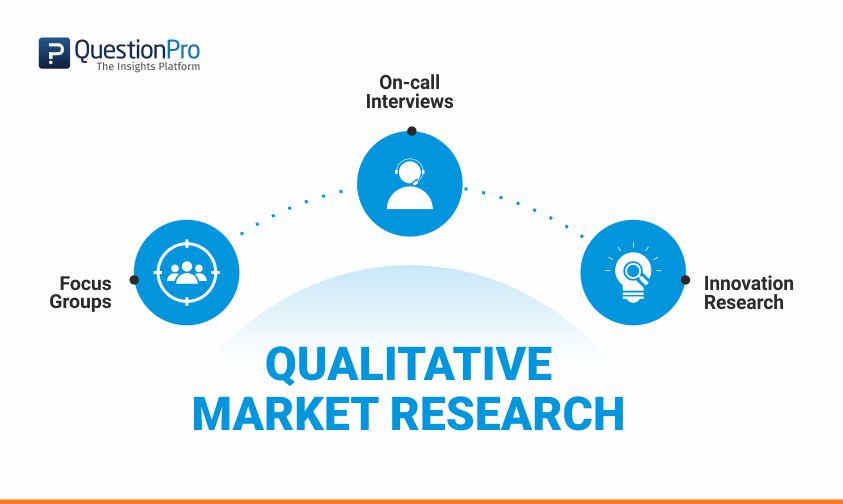
Content Index
What is Qualitative Market Research?
Qualitative market research methods and techniques, 4 types of qualitative market research testing methods, examples of qualitative market research.
- Ethical Considerations for Qualitative Market Research?
What are the Applications of Qualitative Market Research?
Advantages of qualitative market research, disadvantages of qualitative market research, online qualitative market research software- questionpro communities.
Qualitative market research is an open ended questions (conversational) based research method that heavily relies on the following market research methods : focus groups, in-depth interviews, and other innovative research methods. It is based on a small but highly validated sample size, usually consisting of 6 to 10 respondents .
The small size enables cost saving, while the “importance” of the samples and the lack of a defined questionnaire allows free and in-depth discussion and analysis of topics. Usually, the discussion is directed by the discretion of the interviewer or market researcher. You can use single ease questions . A single-ease question is a straightforward query that elicits a concise and uncomplicated response.
It is always better to have more heads than one. By canvassing a group of respondents for ideas and competence the quality of the data that is obtained is far more superior. This concept is known as crowdsourcing, derived from the two words “crowd” and “outsourcing”.
LEARN ABOUT: Perceived Value
Qualitative market research is most frequently used in political campaigning to understand voter perception of political candidates and their policies, interviewing business leaders and diving deeper into topics of interest, psychological profile studies and so on.
Qualitative market research is a relatively less expensive method to understand 2 critical factors in details – “what” the respondents think and feel about a certain topic and “why” they think and feel that way.
LEARN ABOUT: Market research industry

Why do we ask for an opinion? Any opinion for that matter? We ask because the person’s opinion matters to our decision making. None of the successful organizational decisions are made through mere guesses or speculations, but through real information gathered from real and valuable people.
Market research , in general, has played a critical role in inducing a thought process in present day’s organizational leaders where information and data dictate policies and decisions.
However, in market research design , not all information is just numbers and quantitative research . Some are just – conversational and qualitative!
LEARN ABOUT: Research Process Steps
Remember the super hit series Desperate Housewives? And do you remember the lovely housewives calling their friends over for a cup of tea or a couple of drinks to discuss the flashy new products they have bought?
It is not just a vague practice to flaunt these products but a thoughtful one because it matters what the friends think. Whether, they agree or disagree with the quality, brand and other features of those products. It matters what people think. Voila! Welcome to the world of qualitative market research.
Qualitative market research is all about understanding people’s beliefs and point of views and what they feel about the situation and what are the deciding factors that influence their behavior.
LEARN ABOUT: Marketing Insight
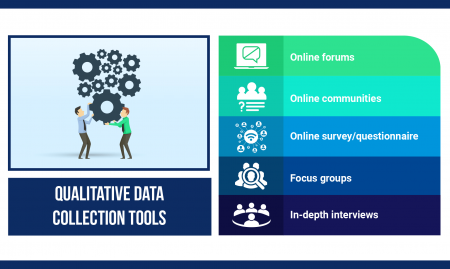
To conduct qualitative market research usually, one of these market research methods are used:
- Focus groups: As the name suggests, a group of people comprising usually of 6-10 members are brought together to discuss a particular product and its market strategies. Usually, experts in that particular field will comprise of the group. This group will have a moderator who will stimulate the discussion amongst the members to derive opinions. Since the focus groups are becoming a rare occurrence, platforms like Communities is on the rise.
- In-depth Interviews: It is usually a one-on-one interview method conducted with a group of people, either face to face or over the telephone. This method is more conversational and asking open-ended questions helps gather better data.
- Innovative research methods: In this method, the researcher can click photographs of the person who is answering the questions or can even record their videos. Observing these photographs or videos later would tell the researcher about their responses/reactions to various situations.
- Observations or “Shop-alongs”: Qualitative Observations or shop-alongs are now becoming an increasingly used research method in qualitative market research. This method allows the researcher to observe from afar and actually see how a consumer reacts to an actual product and purchase experience. This mitigates the scope to be dishonest with feedback or even forget about the shopping experience at a later stage.
LEARN ABOUT: Qualitative Interview
- Lifestyle Immersion: A newer method of conducting qualitative market research is attending a social or family event that user/s are at and collecting feedback. This helps with the getting feedback from users when they are in a comfortable environment. This is a great way to collect candid feedback in a comfortable environment.
- Online Focus Groups: With the ease of access to social media, online focus groups are becoming easier to manage. It is easy to recruit people to a focus group based study and even manage data collection and analytics.
- Ethnography: Ethnographic research is the process of being in an end user environment and seeing the user indulge with a product in a real-life example. This qualitative research method is best positioned to help create immediate and impactful product tweaks.
- Projective Techniques: Projective techniques are conducted by trained moderators who uncover hidden thoughts of the respondents. The questions or questioning methods are of an indirect nature and the moderator then deduces and uncovers underlying feelings that aren’t explicitly mentioned.
- Online Forums: Online forums is now becoming an increasingly preferred way of conducting qualitative market research. Members in a panel are brought onto a common platform to discuss a certain topic and the moderator ensures the discussion is driven in the direction of the outcome required. The moderator probes, asks the right questions and coerces to ensure a thorough discussion is conducted.
- Online Sentence Completion and Word Association: One of the easier but exhaustive nature of completing qualitative market research is to get respondents to match words that may be related to a product or even complete sentences online and this provides a deeper insight into the thoughts of the user.
Learn more about qualitative research methods
Here are the steps involved in conducting qualitative market research:
- Planning & Determining research objectives: Each research study needs to have a desired outcome at the outset so that the resources behind planning and executing are not wasted and it helps towards business agility.
- Deciding the method to conduct the research: Qualitative market research can be conducted in many ways. Depending on the nature of the study, target audience demographics , geographical location, a product that is being surveyed etc., would the survey method be utilized.
- Getting the right personnel for the job: Conducting a qualitative market research study requires moderators that know how to elicit and track responses from potential respondents.
- Purposive Sampling : In this method, the sample is created with a purpose in mind. The contours of the demographics are planned well in advance and users that fit this criterion are onboard for the market research survey.
- Quota Sampling: Quota sampling is the process of selecting samples from a given quota and the selected users are said to be a representative of the larger population. This can be a random sampling or put some qualifying criteria in.
- Snowball Sampling: Snowball sampling model is based on a reference model. Users that match criteria are asked to refer users that they are personally aware of that match the criteria.
- Survey design: The survey has to be designed in a way to elicit maximum value so that the responses received build towards robust and actionable feedback.
- Data collection: The data collection can be done via online or offline methods. It is imperative to collect the data in such a way that sense could be made of it and it could be used to analyze and report.
- Data Analysis: Data means nothing if it is not analyzed. Data that has been analyzed can give actionable insights for a product or brand to build on and this is imperative for a qualitative marketing research survey.
- Reporting: Once data has been collected and analyzed, it has to be reported in an easy to consume format to the relevant stakeholders as a milestone in the market research process.
LEARN ABOUT: Steps in Qualitative Research
There are 4 distinct types of qualitative market research testing methods that can be conducted. They are:
- Direct Exploration: This qualitative market research method is a no holds barred feedback method for a potential idea or product. This method is conducted where the users are told about the idea where no physical product is provided and all possible feedback is collected. This feedback is then collected and explored to form the basis of the new product.
- Monadic Testing: This method evaluates feedback by providing users with one single idea, concept, feature or product and asks for feedback. In this method, despite there being multiple concepts available, other designs are not shown. This method is important to elicit individual piece of feedback about a desired feature or concept.
- Sequential Monadic Testing: This testing method is similar to monadic testing because each concept, product or feature is shown one time. The only difference is that an alternate design to each concept is shown at the same time and feedback is collected on both from a user. This testing method is also called paired testing or paired nomadic testing.
- Discrete Choice Testing: Discrete choice testing is like paired nomadic testing but the only difference is that all choices are provided at once, not sequentially and the users are asked to pick one feature over another and then explain their choice.
LEARN ABOUT: User Experience Research
Successful businesses tend to use qualitative market research to keep pace with the ongoing market trend analysis , to make better-informed decisions and to achieve business excellence.
Whether your business is a start-up or a well-established entity, qualitative market research is a powerful method to identify your target audience and understand how they will respond to your product.
Before we dig deeper here are some of the real-time examples of qualitative market research case studies:
- AP, Norc and QuestionPro partner on geolocation exit polling app
- Washington State Ferry
Some examples of business expansion where qualitative market research plays a critical role by crowdsourcing concrete ideas for optimized decision-making :
- Branding : Many companies fail to understand how consumers perceive their brand or what is the brand positioning in comparison to their competitors. The research is typically done by conducting interviews with customers or organizing focus groups to collect feedback on marketing content and collaterals. In this way, the surveyor can explore different topics in-depth and get feedback from the respondents. Using this market research method, brands can gather information that can help them upscale and reposition their brand better in the market. LEARN ABOUT: Brand health
- Understanding the Consumer Behaviour: Sometimes, organizations/ companies/ entrepreneurs need more information about their consumer in order to place their product in a better manner. To do so they might need information about their gender, age, marital status etc. Qualitative market research helps them gather such information. For understanding the consumer behavior conducting in-depth interviews is the best option, as these interviews are conducted on one to one basis a decent amount of information can be collected.
- Measuring the reach of marketing activities: Many businesses go an extra mile to do a better job in promoting their brands. Here is where their marketing activities come into play. Market research can provide organizations with information about their marketing effectiveness by gathering first-hand information on how consumers look at their marketing message. This helps organizations maximize their marketing budget.
- Identifying new business opportunities: Market research helps organizations explore new opportunities leading to business expansion. By gathering data through market research through focus groups, organizations can pin a location, understand business dynamics, know their key competitors etc., to grow their business in the right direction.
- Getting insights on products: If a company comes up with a new product or looking to improve a current one, it is always better to take a market research in order to understand how acceptable is the product amongst the consumers. When a product comes to the market people have an opinion about its shape, size, utility, color, features etc. Qualitative market research through in-depth interviews will help gather systematic data that can be later used to modify or make the existing product better.
LEARN ABOUT: Market Evaluation
Employee Experience: Definition
Research ethics are as important as important as the ethics in any other research field. It is important to safeguard the participants’ interest. Like there is training and formal processes for researchers in other fields like in healthcare and medical research, market research is also governed by similar policies.
Due to the nature of qualitative market research, it is very important to have informed consent from a participant to be a part of the research study. This means that they are aware of basic information like:
- Nature of the research
- Expected time of completion
- If there are any sociological or physical risks or benefits
- Will a monetary or remuneration in other form be present
- Confidentiality protection
- How will the name and other personal details be used
- Any legal repercussions
Since this is a relatively less expensive and a more flexible method of market research there are a few applications of this market research methodology:
- It helps to understand the needs of the customers and their behavioral research pattern.
- What consumers think and perceive your product as.
- To understand the efficiency of your business planning and also to know if the strategies and planning that you put in place are working or not.
- What sort of marketing messages has a strong impact on the consumers and what just fall on deaf ears?
- Whether or not there is a demand for your product or services in the market?
LEARN ABOUT: Test Market Demand
Ultimately, qualitative market research is all about asking people to elaborate on their opinion to get a better insight into their behavioral pattern. It’s about understanding “Why” even before “What”.
LEARN ABOUT: Behavioral Targeting
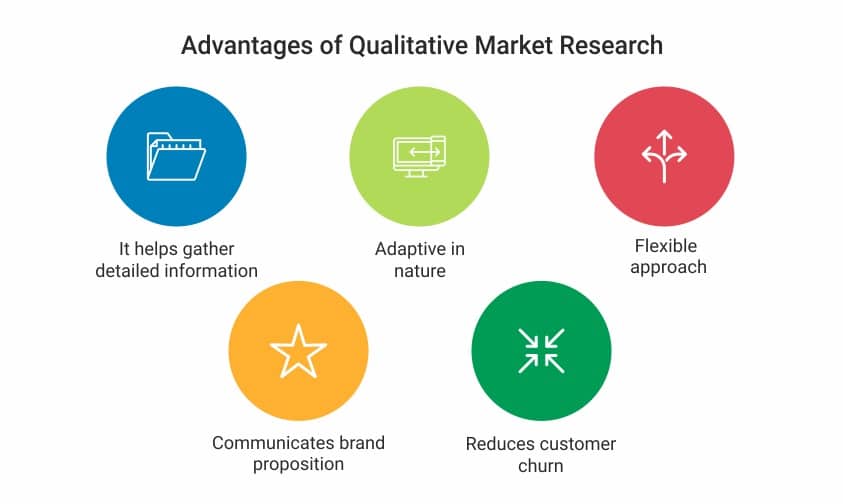
- It helps you gather detailed information: One of the major advantages of this market research method is that it helps you collect details information instead of just focusing on the metrics of data. It helps you understand the subtleties of the information obtained thus enabling in-depth analysis .
- It’s adaptive in nature: This market research can adapt to the quality of information that is collected. If the available data seems not to be providing any results, the researcher can immediately seek to collect data in a new direction. This offers more flexibility to collect data.
- It operates within structures that are fluid: The data collected through this research method is based on observation and experiences, therefore, an experienced researcher can follow up with additional open ended questions if needed to extract more information from the respondents.
- Helps communicate brand proposition accurately: Through this market research method, the consumers can communicate with the brand effectively and vice versa. Any product terminology, product jargons etc are effectively communicated as this research method gives a chance to the brand and the consumer to express their needs and values freely, thus minimizing any miscommunication.
- It helps reduce customer churn : Consumer behaviors can change overnight, leaving a brand to wonder what went wrong. By conducting qualitative market research, brands have a chance to understand what consumers want and if they are fulfilling their needs or not, thereby reducing customer churn . Thus the brand-consumer relationship is maintained.
LEARN ABOUT: Market research vs marketing research
- It is time-consuming: Qualitative market research can take days, weeks, months and in some cases even years to complete. This isn’t good to get quick actionable insights. In some cases, the premise with which the survey began may be non-existent due to market evolution.
- It is expensive: Due to the time taken to complete, qualitative market research is extremely expensive. They are also expensive to conduct and create actionable insights because the data is humungous and people with certain research skill sets are required to manage the research process.
- It is subjective: What one user may think could be very different from another. Due to this, there is no standardization of responses. This also means that the lines between true and false blur out to the point that each response is to be considered at face value.
- No result verification: Data collected cannot be verified because in most cases in a qualitative market research, the data is based on personal perceptions. Hence for analysis, each opinion is considered as it is valid.
- Halo effect: Due to the highly subjective nature of the research, the preconceived notion of the moderator or the person conducting the analysis skews the reporting of the research. It is human tendency to gravitate towards what’s known and it is very tough to get rid of this research bias .
LEARN ABOUT: Self-Selection Bias
With the increasing competition in the business world, the extensive need for business research has also increased. QuestionPro Communities is a qualitative research platform that is interactive, where existing customers can submit their feedback and also stay well informed about the market research activities, helps researchers undertake studies to maximize sales and profits. Through the communities platform, researchers can carry out research to effectively target and understand their customers, understand what is the market trend, prevent future research problems and thereby reduce customer churn .
This qualitative research platform helps in developing businesses to know their competitors and help identify the latest trends in the market. To carry out a well-directed research, businesses need a software platform that can help researchers understand the mindset of the consumers, interpret their thoughts and collect meaningful qualitative data .
QuestionPro Communities is the World’s leading platform for conducting analytics powered qualitative method . This online qualitative market research software helps researchers save their time, using niche technology like text analysis , where computers are used to extract worthwhile information from human language in an efficient manner, increase flexibility and improve the validity of qualitative research questions . This online platform help researchers reduce manual and clerical work.
QuestionPro Communities Qualitative Market Research Tools Includes:
Discussions
The online qualitative research software and tool, Discussions, allows a researcher to invite respondents to a community discussion session and moderate the focus group online. This can also be done live at a specific time that is convenient to the researcher and offer the users the flexibility to post responses when they login to their community. Invitations can be sent out well in advance to a specific target group the researcher would like to gather feedback from.

In case you are looking for respondents to share their ideas and allow others to analyze and offer a feedback and vote on the existing submissions, then this is a great tool to manage and present your results to the key stakeholders.

In this online community, you can submit topics, cast your vote in the existing posts and add comments or feedback instantly.

QuestionPro Communities is the only panel management and discussion platform that offers a seamless mobile communities experience. When it comes to engagement, how you reach respondents matter! Go mobile and take Discussions, Topics, and Idea Board anywhere your respondents go.
Feel free to explore our latest blog discussing practical examples of qualitative data in education – a valuable resource to deepen your insights into student experiences and learning dynamics. Why not give it a read and discover fresh perspectives for enhancing educational practices?
Learn about the other market research method: Quantitative Market Research
MORE LIKE THIS
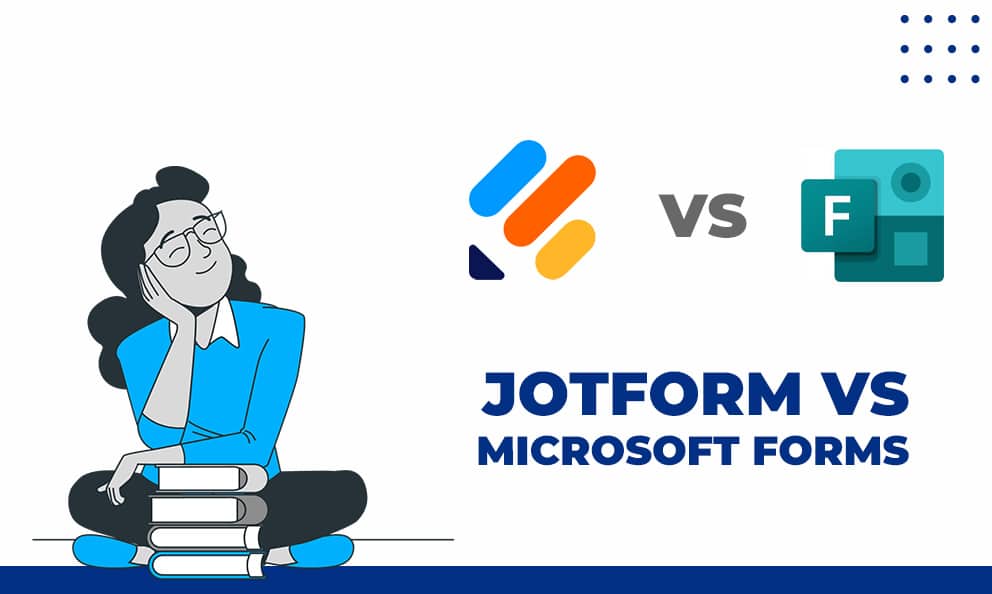
Jotform vs Microsoft Forms: Which Should You Choose?
Aug 26, 2024

Stay Conversations: What Is It, How to Use, Questions to Ask

Age Gating: Effective Strategies for Online Content Control
Aug 23, 2024

Work-Life Balance: Why We Need it & How to Improve It
Aug 22, 2024
Other categories
- Academic Research
- Artificial Intelligence
- Assessments
- Brand Awareness
- Case Studies
- Communities
- Consumer Insights
- Customer effort score
- Customer Engagement
- Customer Experience
- Customer Loyalty
- Customer Research
- Customer Satisfaction
- Employee Benefits
- Employee Engagement
- Employee Retention
- Friday Five
- General Data Protection Regulation
- Insights Hub
- Life@QuestionPro
- Market Research
- Mobile diaries
- Mobile Surveys
- New Features
- Online Communities
- Question Types
- Questionnaire
- QuestionPro Products
- Release Notes
- Research Tools and Apps
- Revenue at Risk
- Survey Templates
- Training Tips
- Tuesday CX Thoughts (TCXT)
- Uncategorized
- What’s Coming Up
- Workforce Intelligence
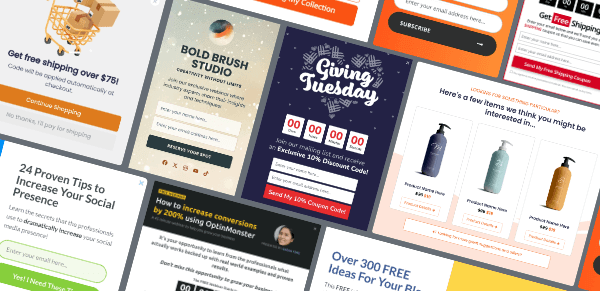
Pick From 700+ Templates!
Campaign Types
Floating Bars

14 Welcome Email Examples To Boost Engagement + Free Templates
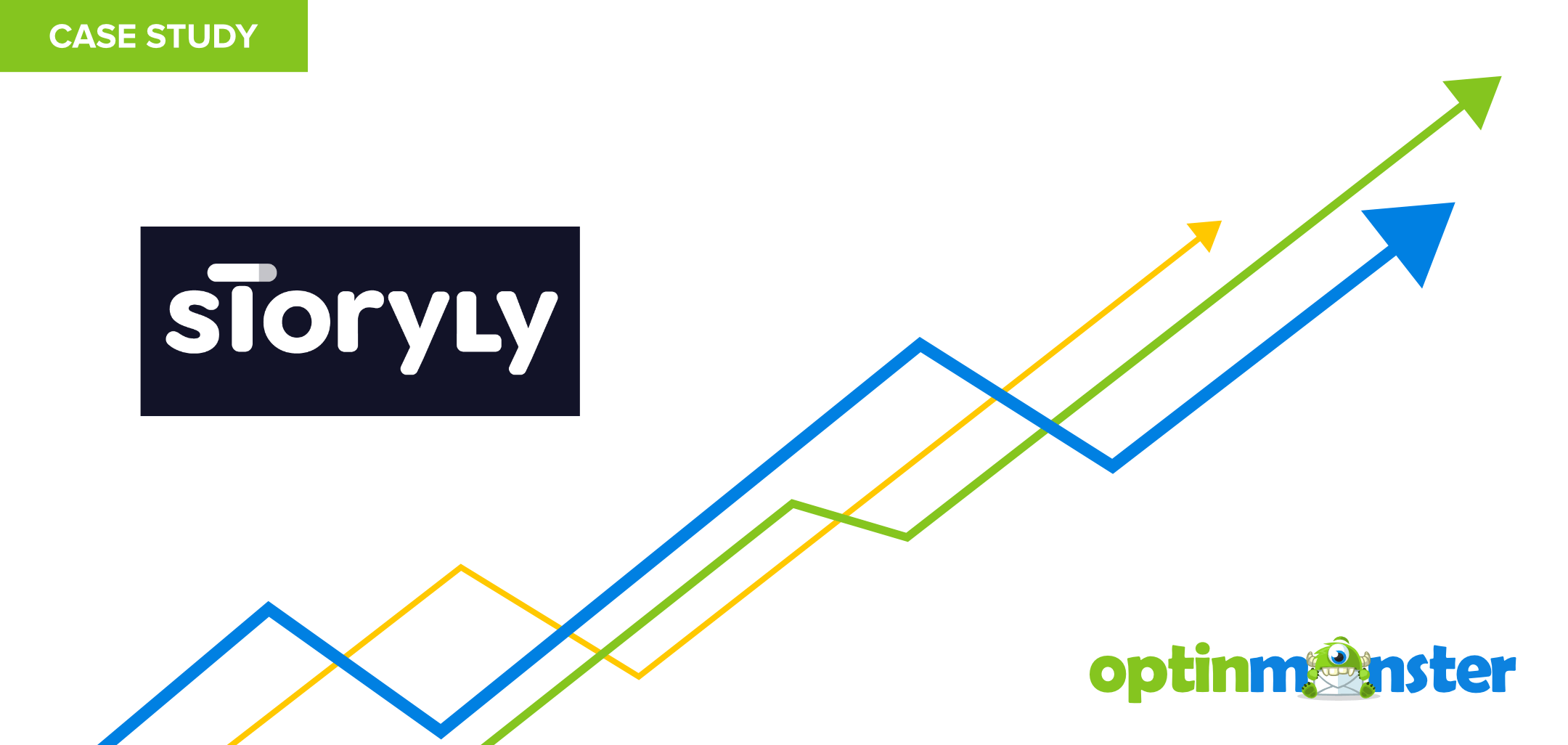
How Storyly Increased Conversions by 80% with Exit-Intent® and Content-Gating
- Get OptinMonster
Join 1,213,437+ using OptinMonster to get more subscribers and customers.
See all Features
7 Types of Qualitative Research + 6 Types of Qualitative Methods of Research
Last updated on
Jennifer Butler Keeton
Friend's Email Address
Your Email Address

Do you want to learn about the types of qualitative research and some examples of methodologies?
Qualitative studies are vital to the market research process. They provide an understanding of the reasons and motivations behind consumer decisions. You can use this information to improve your marketing and increase sales.
What does that mean for your business?
If you have a product that isn’t selling as well as you expected, qualitative research can help you understand why. Or, if you’re launching a new marketing campaign, qualitative studies can help you create ads that will entice your target audience.
If you’re new to this kind of market research, you’re in the right place.
In this guide, you’ll learn the basics of qualitative market research. We’ll also share how your business can use qualitative data to better appeal to your customers.
What is Qualitative Research?
Why use qualitative research, 7 types of qualitative research, 6 types of qualitative methods of research.
- Ideas for Analyzing Qualitative Data
Qualitative research is any research that provides subjective, non-numerical information. It focuses on people: their experiences, beliefs, and behaviors. It’s generally conducted using observation or unstructured questioning.
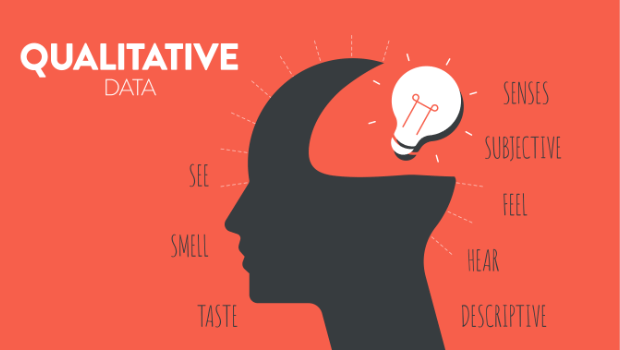
Qualitative research is used across many fields and industries, including sales, marketing, health care, education, and social sciences.
Qualitative vs. Quantitative Research
You likely hear the term “qualitative” used in contrast with “quantitative.”
Quantitative research generates specific numerical data. Its goal is to quantify and generalize the results of a study through numbers, percentages, and statistics. Quantitative research seeks to answer the what , where , when, and who of decision-making.
Qualitative market research, on the other hand, provides insights into the deeper motives behind consumer purchases. Qualitative research answers the why and how .
Why should your business use qualitative research as opposed to quantitative research?
Well, first of all, you should not use qualitative market research instead of quantitative. The 2 are complementary to each other.
Qualitative research on its own is not conclusive. However, you can use it to:
- Explain quantitative research results.
- Conduct market research when traditional surveys are unavailable. For instance, when your topic involves sensitive or complex questions.
- Conduct market research when more structured research is not possible.
Let’s look at an example of combining quantitative and qualitative research.
For instance, we’ll say that your business wants to conduct research to improve your website.
Quantitative research would give you information such as:
- The number of website visitors
- The length of time users stay on each page
- The number of leads generated from each email signup form
- More quantitative data, such as online shopping statistics and conversion rates
This information is all important data about user behavior. But it doesn’t give you the why behind this behavior.
Qualitative research fills in the rest of the picture with information such as:
- Which parts of your website users find difficult to use
- Whether users find your lightbox popups to be intrusive
- Which special offers and coupon codes shoppers find exciting
- More subjective information about how users view the style, relevance, and usability of your site
A complete website study should include both quantitative and qualitative research. Then, you can improve your website based both on hard numbers and users’ experiences and opinions.
Qualitative market research collects subjective feedback and observations from consumers and users. However, as with most data collection, it’s much more complicated in practice.
Experts divide qualitative research into 7 main types. These are also sometimes called types of qualitative research designs.
Below, we’ll quickly explain the basics of each qualitative research approach before diving into qualitative research methods you can use for your market research.
Don’t feel like you have to memorize and fully understand all of these approaches. However, reviewing them will give you a good introduction to the field of qualitative research.
1. Phenomenology
Phenomenological research is based on the root word “phenomena.” It seeks to discover how individual people view specific experiences. Phenomenology focuses on lived experiences and individuality instead of generalizations about larger groups.
2. Ethnography
In the ethnography approach, researchers immerse themselves in a specific culture to gain qualitative data through observation and interaction. Ethnographic research provides more in-depth and nuanced information than, say, questionnaires or interviews. This approach also provides data about specific demographics.
3. Grounded Theory
The term “grounded theory” essentially describes the order in which researchers develop a theory.
In most other types of qualitative research, researchers start with a hypothesis and then conduct a study to test that hypothesis. However, researchers using grounded theory begin with qualitative data, such as interviews and observations, and then analyze it to develop a theory. This approach is helpful when you have no working theory for why consumers behave in a certain way.
4. Case Study
Case studies are in-depth examinations of a business, process, product, person, or group of people. They also often include quantitative research, but they become qualitative when they focus on the reasons behind that data and the participants’ individual experiences.
For instance, in our case study of AdamEnfroy.com , we present subjective feedback in addition to quantitative data:
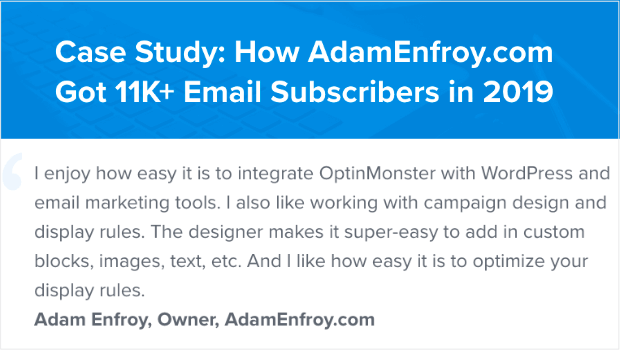
See more examples of OptinMonster’s case study research.
5. Historical Research
The historical approach to research is reasonably self-explanatory. Researchers analyze data from the past to form expectations about the present and future. In qualitative market research, this might mean analyzing consumer feedback from throughout the history of your company or industry.
6. Narrative Research
The narrative approach seeks to tell a story about people’s experiences. Researchers conduct interviews and collect observations over a period of time. Then, they use this information to develop a narrative about the experiences of an individual or small group of people.
7. Action Research
Action research aims to investigate and solve a specific, immediate problem. This type of research is cyclical. Researchers apply an action, analyze the data, draw conclusions, and start again.

Now that you have an overview of the different types of qualitative research, we’ll explore types of qualitative methods of research along with some practical examples.
The approaches above are fairly abstract. Now, we’ll share some concrete qualitative methods to collect data for your business. Even beginners and small businesses can use these methodologies.
Here are some of the most common types of qualitative research methods to give you greater insight into your customers. Next time that you are ready to launch a new product or start a new marketing campaign, try out one or more of these methods. You’ll get valuable feedback that will help you succeed.
1. In-Depth Interviews Let You Dig Deep
In-depth interviews (IDIs) are a great way to get detailed consumer feedback. An IDI can be conducted over the phone, in person, or via webcam, using services like Skype or Zoom.
Webcam interviews have become the most common qualitative research method. 34% of researchers report regularly conducting webcam IDIs as 1 of their top 3 data collection methods.
Regardless of your interview method, your IDIs should focus on your ideal user or an existing customer. You ask each person a series of research questions and follow-ups to learn what motivates them to buy a product like yours.
For qualitative research, you should always ask open-ended questions. Avoid simple yes/no questions that provide only quantitative data.
You should go into the interview with some questions prepared, but you shouldn’t stick to a script. If the participant says something interesting, ask follow-up questions that dig deeper.
Here are a few initial questions you could ask:
- What frustrates you about [your topic]?
- If I had a magic wand and could give you the perfect product, what would it look like?
- Have you bought [your type of product] before? If so, what motivated you to buy it?
IDIs provide detailed information about individuals. Therefore, they are especially common in the phenomenology and narrative types of qualitative research.
2. Focus Groups Allow for the Exchange of Ideas
Like IDIs, focus groups can be face-to-face or online. These groups usually involve sample sizes of 6-10 people. They provide a safe and comfortable environment for your users to talk about their thoughts and feelings surrounding your product.
The advantage of in-person focus groups is that you observe the consumer’s verbal and non-verbal reaction to your product or advertising. Group members can also bounce off each other’s thoughts and ideas, which means you’ll get even greater insights.
You can use focus groups to:
- Test a new product or website
- Explore the general concept for your product
- Evaluate your advertising copy and imagery
- Explore new packaging ideas
Online focus groups are similar to in-person ones. They’re more cost-efficient, allow you to include more people, and are less time-consuming to organize. Now that more people are comfortable with Zoom and Skype, online focus groups are more accessible than ever before.

You can also use social media to your advantage. Create a community of people interested in your topic and use it to foster a conversation. Then, observe the dialogue. You’ll gain a lot of interesting insights!
3. Shopping Observations, or “Shop-Alongs,” Give Real-Time Insight
An in-person observation of shopping behavior lets you watch the consumer react to your products in-store. With a shop-along, you get to see consumers’ real-life shopping behavior. Because you see immediate reactions, this method provides different insight than a written survey.
These qualitative studies highlight problems with shelf displays, clutter, or out-of-stock products. You may also interact with consumers to get deeper insights during the shopping process. You can get real-time feedback on package design, for example.
4. In-Home Videos Show Realistic Product Use
In-home videos allow you to observe how users interact with your product in real life, in their own homes.
This research method’s advantage is the setting of the participant observation. You can see your user’s behavior in a natural, comfortable environment. You’ll get a more realistic view of how people use your product.
5. Lifestyle Immersion Lets You Hear Real-World Dialogue
Lifestyle immersion is when you attend an event, such as a party or a family gathering. This research method gives you an uninterrupted view of users’ attitudes and behaviors. Immersion is another excellent way to get candid insight in a comfortable, familiar setting.
During these activities, observe your users having a dialogue with their friends. Listen to these real-world conversations to learn about consumers’ desires, frustrations, and motivations.
6. Journal or Diary Studies for Honest Feedback
Have your user or potential customer keep a journal or a diary to document their experience with your topic or product. Users may be more likely to be completely honest when they’re not face-to-face with an interviewer or moderator.
Journals can be handwritten or digital. Either way, it will capture your user’s voice, which is extremely valuable for optimizing your marketing copy.
3 Tips for Qualitative Data Analysis (to Help You Understand Your Customers)
Using the methods and types of qualitative research discussed above, you can gather excellent information about consumers’ opinions, experiences, and behaviors. The next step is to analyze your data.
Since qualitative data is unstructured, it can be tricky to draw conclusions, let alone present your findings. While qualitative data is not conclusive in and of itself, here are a few tips for analyzing qualitative research data.
“Top 5 Best Survey Data Visualization Tools (In-Depth Comparison)
1. Summarize the Key Points
For interviews and focus groups, have the moderator write up some key points from the discussion. For example: “Common concerns among participants about our pizza were cheese overuse, greasiness, and bland sauce.”
Here is an example of a qualitative summary from a market research project for Pizza Hut Pakistan
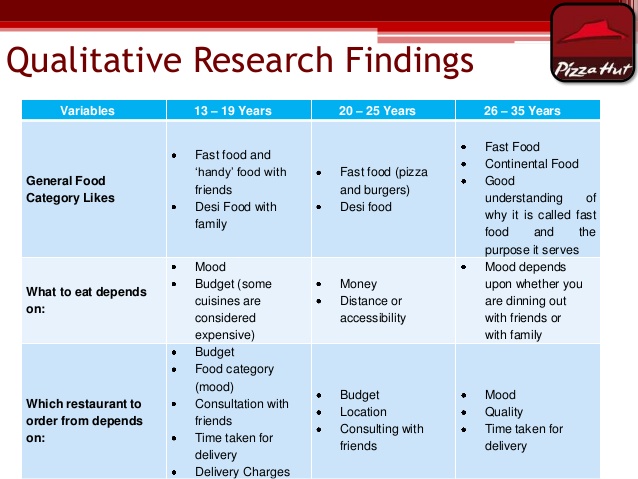
2. Code Responses
Coding is the process of organizing and labeling your qualitative data into categories. You can “code” your unstructured data into labels you can summarize with tables or charts.
For example, a researcher might have asked the open-ended question, “How often do you wear a watch?”
Every respondent’s answer would likely be a little different. But you could code them in categories such as:
- Once in a while
This process gives you coded data sets to analyze and report.
3. Create a Word Cloud
Create a “word cloud” out of the keywords used by consumers. Put your field notes into a word cloud generator like WordClouds.com . In your cloud, the words that research participants used most often will be the largest. You’ll be able to spot the most prominent words easily.

Use Qualitative Research to Improve Marketing and Sales
You can use these qualitative research types, methods, and analysis strategies to understand your users and customers. Qualitative data collection will help you improve your product development and marketing strategy, leading to more sales and revenue.
If online surveys are part of your research process, check out our survey best practices .
Once you clearly understand your customers, apply what you’ve learned to your email marketing strategy . Using in-depth qualitative data, you’ll generate more leads and sales than ever before.
Disclosure : Our content is reader-supported. This means if you click on some of our links, then we may earn a commission. We only recommend products that we believe will add value to our readers.
Add a Comment Cancel reply
We're glad you have chosen to leave a comment. Please keep in mind that all comments are moderated according to our privacy policy , and all links are nofollow. Do NOT use keywords in the name field. Let's have a personal and meaningful conversation.
Save my name, email, and website in this browser for the next time I comment.

Yes, Popups Work
Imagine – 10 minutes could grow leads and sales from your website by 10% or more. You can start today with just a few clicks – no developer or coder needed.
Save 35% or more
Ask yourself – what would you do if you grew by 10% today? You can get started for a few bucks a month, and we’ll create your first popup fast and free if you’d like. It’s risk-free in the best way.
Blog Topics
- A/B Testing
- Announcements
- Case Studies
- Content Marketing
- Email Marketing
- Lead Generation
Popular Posts
Connect with us:, free guides.
See more guides

Growth Hacker Insights: Ultimate Guide to Growth Hacking

Guide to Holiday Campaigns Brought to You by OptinMonster

19 Ways to Reduce Cart Abandonment and Grow Your Revenue
Start Making More Money Today with OptinMonster
Qualitative research examples: How to unlock, rich, descriptive insights
Qualitative research uncovers in-depth user insights, but what does it look like? Here are seven methods and examples to help you get the data you need.

Armin Tanovic
Behind every what, there’s a why . Qualitative research is how you uncover that why. It enables you to connect with users and understand their thoughts, feelings, wants, needs, and pain points.
There’s many methods for conducting qualitative research, and many objectives it can help you pursue—you might want to explore ways to improve NPS scores, combat reduced customer retention, or understand (and recreate) the success behind a well-received product. The common thread? All these metrics impact your business, and qualitative research can help investigate and improve that impact.
In this article, we’ll take you through seven methods and examples of qualitative research, including when and how to use them.
Qualitative UX research made easy
Conduct qualitative research with Maze, analyze data instantly, and get rich, descriptive insights that drive decision-making.

7 Qualitative research methods: An overview
There are various qualitative UX research methods that can help you get in-depth, descriptive insights. Some are suited to specific phases of the design and development process, while others are more task-oriented.
Here’s our overview of the most common qualitative research methods. Keep reading for their use cases, and detailed examples of how to conduct them.
Method | |||
|---|---|---|---|
User interviews | |||
Focus groups | |||
Ethnographic research | |||
Qualitative observation | |||
Case study research | |||
Secondary research | |||
Open-ended surveys | to extract descriptive insights. |
1. User interviews
A user interview is a one-on-one conversation between a UX researcher, designer or Product Manager and a target user to understand their thoughts, perspectives, and feelings on a product or service. User interviews are a great way to get non-numerical data on individual experiences with your product, to gain a deeper understanding of user perspectives.
Interviews can be structured, semi-structured, or unstructured . Structured interviews follow a strict interview script and can help you get answers to your planned questions, while semi and unstructured interviews are less rigid in their approach and typically lead to more spontaneous, user-centered insights.
When to use user interviews
Interviews are ideal when you want to gain an in-depth understanding of your users’ perspectives on your product or service, and why they feel a certain way.
Interviews can be used at any stage in the product design and development process, being particularly helpful during:
- The discovery phase: To better understand user needs, problems, and the context in which they use your product—revealing the best potential solutions
- The design phase: To get contextual feedback on mockups, wireframes, and prototypes, helping you pinpoint issues and the reasons behind them
- Post-launch: To assess if your product continues to meet users’ shifting expectations and understand why or why not
How to conduct user interviews: The basics
- Draft questions based on your research objectives
- Recruit relevant research participants and schedule interviews
- Conduct the interview and transcribe responses
- Analyze the interview responses to extract insights
- Use your findings to inform design, product, and business decisions
💡 A specialized user interview tool makes interviewing easier. With Maze Interview Studies , you can recruit, host, and analyze interviews all on one platform.
User interviews: A qualitative research example
Let’s say you’ve designed a recruitment platform, called Tech2Talent , that connects employers with tech talent. Before starting the design process, you want to clearly understand the pain points employers experience with existing recruitment tools'.
You draft a list of ten questions for a semi-structured interview for 15 different one-on-one interviews. As it’s semi-structured, you don’t expect to ask all the questions—the script serves as more of a guide.
One key question in your script is: “Have tech recruitment platforms helped you find the talent you need in the past?”
Most respondents answer with a resounding and passionate ‘no’ with one of them expanding:
“For our company, it’s been pretty hit or miss honestly. They let just about anyone make a profile and call themselves tech talent. It’s so hard sifting through serious candidates. I can’t see any of their achievements until I invest time setting up an interview.”
You begin to notice a pattern in your responses: recruitment tools often lack easily accessible details on talent profiles.
You’ve gained contextual feedback on why other recruitment platforms fail to solve user needs.
2. Focus groups
A focus group is a research method that involves gathering a small group of people—around five to ten users—to discuss a specific topic, such as their’ experience with your new product feature. Unlike user interviews, focus groups aim to capture the collective opinion of a wider market segment and encourage discussion among the group.
When to use focus groups
You should use focus groups when you need a deeper understanding of your users’ collective opinions. The dynamic discussion among participants can spark in-depth insights that might not emerge from regular interviews.
Focus groups can be used before, during, and after a product launch. They’re ideal:
- Throughout the problem discovery phase: To understand your user segment’s pain points and expectations, and generate product ideas
- Post-launch: To evaluate and understand the collective opinion of your product’s user experience
- When conducting market research: To grasp usage patterns, consumer perceptions, and market opportunities for your product
How to conduct focus group studies: The basics
- Draft prompts to spark conversation, or a series of questions based on your UX research objectives
- Find a group of five to ten users who are representative of your target audience (or a specific user segment) and schedule your focus group session
- Conduct the focus group by talking and listening to users, then transcribe responses
- Analyze focus group responses and extract insights
- Use your findings to inform design decisions
The number of participants can make it difficult to take notes or do manual transcriptions. We recommend using a transcription or a specialized UX research tool , such as Maze, that can automatically create ready-to-share reports and highlight key user insights.
Focus groups: A qualitative research example
You’re a UX researcher at FitMe , a fitness app that creates customized daily workouts for gym-goers. Unlike many other apps, FitMe takes into account the previous day’s workout and aims to create one that allows users to effectively rest different muscles.
However, FitMe has an issue. Users are generating workouts but not completing them. They’re accessing the app, taking the necessary steps to get a workout for the day, but quitting at the last hurdle.
Time to talk to users.
You organize a focus group to get to the root of the drop-off issue. You invite five existing users, all of whom have dropped off at the exact point you’re investigating, and ask them questions to uncover why.
A dialog develops:
Participant 1: “Sometimes I’ll get a workout that I just don’t want to do. Sure, it’s a good workout—but I just don’t want to physically do it. I just do my own thing when that happens.”
Participant 2: “Same here, some of them are so boring. I go to the gym because I love it. It’s an escape.”
Participant 3: “Right?! I get that the app generates the best one for me on that specific day, but I wish I could get a couple of options.”
Participant 4: “I’m the same, there are some exercises I just refuse to do. I’m not coming to the gym to do things I dislike.”
Conducting the focus groups and reviewing the transcripts, you realize that users want options. A workout that works for one gym-goer doesn’t necessarily work for the next.
A possible solution? Adding the option to generate a new workout (that still considers previous workouts)and the ability to blacklist certain exercises, like burpees.
3. Ethnographic research
Ethnographic research is a research method that involves observing and interacting with users in a real-life environment. By studying users in their natural habitat, you can understand how your product fits into their daily lives.
Ethnographic research can be active or passive. Active ethnographic research entails engaging with users in their natural environment and then following up with methods like interviews. Passive ethnographic research involves letting the user interact with the product while you note your observations.
When to use ethnographic research
Ethnographic research is best suited when you want rich insights into the context and environment in which users interact with your product. Keep in mind that you can conduct ethnographic research throughout the entire product design and development process —from problem discovery to post-launch. However, it’s mostly done early in the process:
- Early concept development: To gain an understanding of your user's day-to-day environment. Observe how they complete tasks and the pain points they encounter. The unique demands of their everyday lives will inform how to design your product.
- Initial design phase: Even if you have a firm grasp of the user’s environment, you still need to put your solution to the test. Conducting ethnographic research with your users interacting with your prototype puts theory into practice.
How to conduct ethnographic research:
- Recruit users who are reflective of your audience
- Meet with them in their natural environment, and tell them to behave as they usually would
- Take down field notes as they interact with your product
- Engage with your users, ask questions, or host an in-depth interview if you’re doing an active ethnographic study
- Collect all your data and analyze it for insights
While ethnographic studies provide a comprehensive view of what potential users actually do, they are resource-intensive and logistically difficult. A common alternative is diary studies. Like ethnographic research, diary studies examine how users interact with your product in their day-to-day, but the data is self-reported by participants.
⚙️ Recruiting participants proving tough and time-consuming? Maze Panel makes it easy, with 400+ filters to find your ideal participants from a pool of 3 million participants.
Ethnographic research: A qualitative research example
You're a UX researcher for a project management platform called ProFlow , and you’re conducting an ethnographic study of the project creation process with key users, including a startup’s COO.
The first thing you notice is that the COO is rushing while navigating the platform. You also take note of the 46 tabs and Zoom calls opened on their monitor. Their attention is divided, and they let out an exasperated sigh as they repeatedly hit “refresh” on your website’s onboarding interface.
You conclude the session with an interview and ask, “How easy or difficult did you find using ProFlow to coordinate a project?”
The COO answers: “Look, the whole reason we turn to project platforms is because we need to be quick on our feet. I’m doing a million things so I need the process to be fast and simple. The actual project management is good, but creating projects and setting up tables is way too complicated.”
You realize that ProFlow ’s project creation process takes way too much time for professionals working in fast-paced, dynamic environments. To solve the issue, propose a quick-create option that enables them to move ahead with the basics instead of requiring in-depth project details.
4. Qualitative observation
Qualitative observation is a similar method to ethnographic research, though not as deep. It involves observing your users in a natural or controlled environment and taking notes as they interact with a product. However, be sure not to interrupt them, as this compromises the integrity of the study and turns it into active ethnographic research.
When to qualitative observation
Qualitative observation is best when you want to record how users interact with your product without anyone interfering. Much like ethnographic research, observation is best done during:
- Early concept development: To help you understand your users' daily lives, how they complete tasks, and the problems they deal with. The observations you collect in these instances will help you define a concept for your product.
- Initial design phase: Observing how users deal with your prototype helps you test if they can easily interact with it in their daily environments
How to conduct qualitative observation:
- Recruit users who regularly use your product
- Meet with users in either their natural environment, such as their office, or within a controlled environment, such as a lab
- Observe them and take down field notes based on what you notice
Qualitative observation: An qualitative research example
You’re conducting UX research for Stackbuilder , an app that connects businesses with tools ideal for their needs and budgets. To determine if your app is easy to use for industry professionals, you decide to conduct an observation study.
Sitting in with the participant, you notice they breeze past the onboarding process, quickly creating an account for their company. Yet, after specifying their company’s budget, they suddenly slow down. They open links to each tool’s individual page, confusingly switching from one tab to another. They let out a sigh as they read through each website.
Conducting your observation study, you realize that users find it difficult to extract information from each tool’s website. Based on your field notes, you suggest including a bullet-point summary of each tool directly on your platform.
5. Case study research
Case studies are a UX research method that provides comprehensive and contextual insights into a real-world case over a long period of time. They typically include a range of other qualitative research methods, like interviews, observations, and ethnographic research. A case study allows you to form an in-depth analysis of how people use your product, helping you uncover nuanced differences between your users.
When to use case studies
Case studies are best when your product involves complex interactions that need to be tracked over a longer period or through in-depth analysis. You can also use case studies when your product is innovative, and there’s little existing data on how users interact with it.
As for specific phases in the product design and development process:
- Initial design phase: Case studies can help you rigorously test for product issues and the reasons behind them, giving you in-depth feedback on everything between user motivations, friction points, and usability issues
- Post-launch phase: Continuing with case studies after launch can give you ongoing feedback on how users interact with the product in their day-to-day lives. These insights ensure you can meet shifting user expectations with product updates and future iterations
How to conduct case studies:
- Outline an objective for your case study such as examining specific user tasks or the overall user journey
- Select qualitative research methods such as interviews, ethnographic studies, or observations
- Collect and analyze your data for comprehensive insights
- Include your findings in a report with proposed solutions
Case study research: A qualitative research example
Your team has recently launched Pulse , a platform that analyzes social media posts to identify rising digital marketing trends. Pulse has been on the market for a year, and you want to better understand how it helps small businesses create successful campaigns.
To conduct your case study, you begin with a series of interviews to understand user expectations, ethnographic research sessions, and focus groups. After sorting responses and observations into common themes you notice a main recurring pattern. Users have trouble interpreting the data from their dashboards, making it difficult to identify which trends to follow.
With your synthesized insights, you create a report with detailed narratives of individual user experiences, common themes and issues, and recommendations for addressing user friction points.
Some of your proposed solutions include creating intuitive graphs and summaries for each trend study. This makes it easier for users to understand trends and implement strategic changes in their campaigns.
6. Secondary research
Secondary research is a research method that involves collecting and analyzing documents, records, and reviews that provide you with contextual data on your topic. You’re not connecting with participants directly, but rather accessing pre-existing available data. For example, you can pull out insights from your UX research repository to reexamine how they apply to your new UX research objective.
Strictly speaking, it can be both qualitative and quantitative—but today we focus on its qualitative application.
When to use secondary research
Record keeping is particularly useful when you need supplemental insights to complement, validate, or compare current research findings. It helps you analyze shifting trends amongst your users across a specific period. Some other scenarios where you need record keeping include:
- Initial discovery or exploration phase: Secondary research can help you quickly gather background information and data to understand the broader context of a market
- Design and development phase: See what solutions are working in other contexts for an idea of how to build yours
Secondary research is especially valuable when your team faces budget constraints, tight deadlines, or limited resources. Through review mining and collecting older findings, you can uncover useful insights that drive decision-making throughout the product design and development process.
How to conduct secondary research:
- Outline your UX research objective
- Identify potential data sources for information on your product, market, or target audience. Some of these sources can include: a. Review websites like Capterra and G2 b. Social media channels c. Customer service logs and disputes d. Website reviews e. Reports and insights from previous research studies f. Industry trends g. Information on competitors
- Analyze your data by identifying recurring patterns and themes for insights
Secondary research: A qualitative research example
SafeSurf is a cybersecurity platform that offers threat detection, security audits, and real-time reports. After conducting multiple rounds of testing, you need a quick and easy way to identify remaining usability issues. Instead of conducting another resource-intensive method, you opt for social listening and data mining for your secondary research.
Browsing through your company’s X, you identify a recurring theme: many users without a background in tech find SafeSurf ’s reports too technical and difficult to read. Users struggle with understanding what to do if their networks are breached.
After checking your other social media channels and review sites, the issue pops up again.
With your gathered insights, your team settles on introducing a simplified version of reports, including clear summaries, takeaways, and step-by-step protocols for ensuring security.
By conducting secondary research, you’ve uncovered a major usability issue—all without spending large amounts of time and resources to connect with your users.
7. Open-ended surveys
Open-ended surveys are a type of unmoderated UX research method that involves asking users to answer a list of qualitative research questions designed to uncover their attitudes, expectations, and needs regarding your service or product. Open-ended surveys allow users to give in-depth, nuanced, and contextual responses.
When to use open-ended surveys
User surveys are an effective qualitative research method for reaching a large number of users. You can use them at any stage of the design and product development process, but they’re particularly useful:
- When you’re conducting generative research : Open-ended surveys allow you to reach a wide range of users, making them especially useful during initial research phases when you need broad insights into user experiences
- When you need to understand customer satisfaction: Open-ended customer satisfaction surveys help you uncover why your users might be dissatisfied with your product, helping you find the root cause of their negative experiences
- In combination with close-ended surveys: Get a combination of numerical, statistical insights and rich descriptive feedback. You��’ll know what a specific percentage of your users think and why they think it.
How to conduct open-ended surveys:
- Design your survey and draft out a list of survey questions
- Distribute your surveys to respondents
- Analyze survey participant responses for key themes and patterns
- Use your findings to inform your design process
Open-ended surveys: A qualitative research example
You're a UX researcher for RouteReader , a comprehensive logistics platform that allows users to conduct shipment tracking and route planning. Recently, you’ve launched a new predictive analytics feature that allows users to quickly identify and prepare for supply chain disruptions.
To better understand if users find the new feature helpful, you create an open-ended, in-app survey.
The questions you ask your users:
- “What has been your experience with our new predictive analytics feature?"
- “Do you find it easy or difficult to rework your routes based on our predictive suggestions?”
- “Does the predictive analytics feature make planning routes easier? Why or why not?”
Most of the responses are positive. Users report using the predictive analytics feature to make last-minute adjustments to their route plans, and some even rely on it regularly. However, a few users find the feature hard to notice, making it difficult to adjust their routes on time.
To ensure users have supply chain insights on time, you integrate the new feature into each interface so users can easily spot important information and adjust their routes accordingly.
💡 Surveys are a lot easier with a quality survey tool. Maze’s Feedback Surveys solution has all you need to ensure your surveys get the insights you need—including AI-powered follow-up and automated reports.
Qualitative research vs. quantitative research: What’s the difference?
Alongside qualitative research approaches, UX teams also use quantitative research methods. Despite the similar names, the two are very different.
Here are some of the key differences between qualitative research and quantitative research .
Research type | ||||
|---|---|---|---|---|
Qualitative research | . | |||
Quantitative research |
Before selecting either qualitative or quantitative methods, first identify what you want to achieve with your UX research project. As a general rule of thumb, think qualitative data collection for in-depth understanding and quantitative studies for measurement and validation.
Conduct qualitative research with Maze
You’ll often find that knowing the what is pointless without understanding the accompanying why . Qualitative research helps you uncover your why.
So, what about how —how do you identify your 'what' and your 'why'?
The answer is with a user research tool like Maze.
Maze is the leading user research platform that lets you organize, conduct, and analyze both qualitative and quantitative research studies—all from one place. Its wide variety of UX research methods and advanced AI capabilities help you get the insights you need to build the right products and experiences faster.
Frequently asked questions about qualitative research examples
What is qualitative research?
Qualitative research is a research method that aims to provide contextual, descriptive, and non-numerical insights on a specific issue. Qualitative research methods like interviews, case studies, and ethnographic studies allow you to uncover the reasoning behind your user’s attitudes and opinions.
Can a study be both qualitative and quantitative?
Absolutely! You can use mixed methods in your research design, which combines qualitative and quantitative approaches to gain both descriptive and statistical insights.
For example, user surveys can have both close-ended and open-ended questions, providing comprehensive data like percentages of user views and descriptive reasoning behind their answers.
Is qualitative or quantitative research better?
The choice between qualitative and quantitative research depends upon your research goals and objectives.
Qualitative research methods are better suited when you want to understand the complexities of your user’s problems and uncover the underlying motives beneath their thoughts, feelings, and behaviors. Quantitative research excels in giving you numerical data, helping you gain a statistical view of your user's attitudes, identifying trends, and making predictions.
What are some approaches to qualitative research?
There are many approaches to qualitative studies. An approach is the underlying theory behind a method, and a method is a way of implementing the approach. Here are some approaches to qualitative research:
- Grounded theory: Researchers study a topic and develop theories inductively
- Phenomenological research: Researchers study a phenomenon through the lived experiences of those involved
- Ethnography: Researchers immerse themselves in organizations to understand how they operate





























































IMAGES
COMMENTS
A guide to qualitative market research methods with examples. Grab a free template, and learn how to choose the right type for your research.
Qualitative market research is defined as a systematic and open-ended market research method used to gain understanding of consumer behaviour, perceptions, preferences, and motivations. Learn more about qualitative market research methods, examples, types and best practices.
Qualitative research will help you obtain a clear understanding of your target customers, recognize the emotional connections to your brand, identify potential obstacles to purchase and features that are missing in your offer, and as a result, develop an outstanding product. Qualitative research will be useful for businesses of any size and type.
It focuses on the role of qualitative analyses in revealing how ads are "read" by consumers. Methodological approaches considered include observation, depth interviews, projective methods, focus groups, netnography, and videography. Theoretical approaches reviewed include semiotics, reader response, and co-optation theory.
Qualitative research offers deep insights into human behavior by delving into individual perspectives, societal dynamics, and cultural influences. It emphasizes narratives and subjective interpretations to unveil hidden meanings. Real-world examples in fields like market research and UX design demonstrate how qualitative research uncovers consumer behaviors and user experiences, driving ...
The most comprehensive list of qualitative research questions and examples online. See how questions are designed and how to use them to succeed and grow.
Qualitative market research is an open-ended research method that looks at the reasons and motivations behind customer behavior, at the micro level. Qualitative market research gives you actionable insights you can use to improve everything from your customer service strategies to your products and services.
Qualitative market research is an open ended questions (conversational) based research method that heavily relies on the following market research methods: focus groups, in-depth interviews, and other innovative research methods. It is based on a small but highly validated sample size, usually consisting of 6 to 10 respondents.
Use Qualitative Research to Improve Marketing and Sales You can use these qualitative research types, methods, and analysis strategies to understand your users and customers.
Using Qualitative Research in Advertising. This engaging book uses a step by step approach to describe what qualitative research techniques are designed to do and how they aid in uncovering insights useful for advertising strategy development, creative development, and concurrent and post-campaign evaluation.
This Second Edition remains the only book to discuss both theory and application of qualitative research techniques to inspire great advertising and build strong brands. Using a step-by-step approach, designed for students considering advertising careers and for those currently working in the advertising industry, this book explains what qualitative research techniques are designed to do. The ...
Qualitative Marketing Research. This is a perfect guide to understanding the core principles of qualitative marketing research. It. presents qualitative marketing research in the broader context ...
Case study research: A qualitative research example Your team has recently launched Pulse , a platform that analyzes social media posts to identify rising digital marketing trends. Pulse has been on the market for a year, and you want to better understand how it helps small businesses create successful campaigns.
in Qualitative Marketing Research Laddering is a qualitative marketing research technique, which seeks to understand why people buy and use products and services.
Qualitative Research Methods in Public Relations and Marketing Communications will be invaluable for those undertaking research methods courses on public relations and marketing communication degrees, as well as those working on a dissertation.
Learn about the pros and cons of qualitative market research, and discover how it can provide you with actionable insights for improved marketing strategies.
Abstract For students and novice researchers, the choice of qualitative approach and subsequent alignment among problems, research questions, data collection, and data analysis can be particularly tricky. Therefore, the purpose of this paper is to provide a concise explanation of four common qualitative approaches, case study, ethnography, narrative, and phenomenology, demonstrating how each ...
Despite the call for adding more qualitative explorations in advertising research (Belk 2017), literature on new marketing phenomena, such as livestreaming e-commerce, rarely applied a mixed approach.
Start your next qualitative research project confidently with practical tips and real-world examples to help you gather in-depth data from your target audience.
Discussion of quantitative or quality advertising in the creative process relates to two general research types that companies use to better understand market segments. Effective research provides ...
Qualitative Research Examples. 1. Ethnography. Definition: Ethnography is a qualitative research design aimed at exploring cultural phenomena. Rooted in the discipline of anthropology, this research approach investigates the social interactions, behaviors, and perceptions within groups, communities, or organizations.
It involves qualitative research and analysis of consumers' pain points and behavior. Ethnography identifies unmet needs - and this is where the real breakthroughs in product development can occur. Learn more about the importance of intuition and curiosity in market research.
Qualitative Research Questionnaire Example. Here is a concise qualitative research questionnaire sample for research papers to give you a better idea of its format and how it is presented. Thank you for participating in our survey. We value your feedback on our new mobile app. Your responses will help us improve the applications and better meet ...
Qualitative in nature: Exploratory research typically relies on qualitative methods, such as in-depth interviews, focus groups, or observation, to gather rich and detailed data on the research problem.